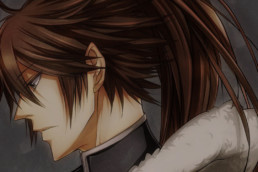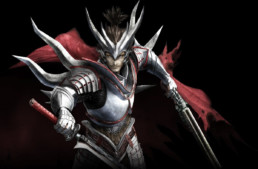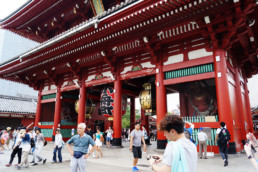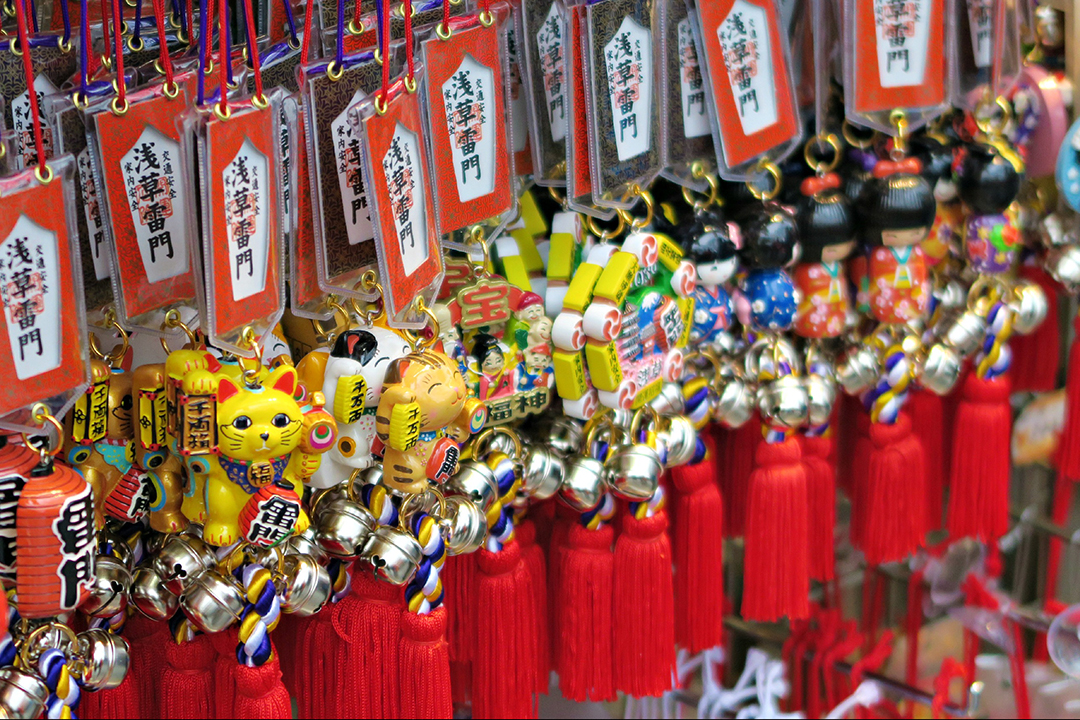Japan History: Hattori Hanzō
Hattori Hanzō
Hattori Hanzō (服部 半蔵, ~1542 – 4 Novembre, 1596), conosciuto anche come Hattori Masanari o Hattori Masashige (服部 正成), è stato un samurai dell'era Sengoku. È famoso per aver salvato la vita di Tokugawa Ieyasu e per averlo aiutato a diventare il dominatore del Giappone.

Photo Credits: wonderslist.com/
Era il figlio di Hattori Hanzō Yasunaga (服部 半蔵(半三) 保長), samurai minore al servizio del clan Matsudaira (successivamente Tokugawa). In seguito, per via delle tattiche utilizzate per le sue operazioni, gli venne dato il soprannome di Oni no Hanzō (鬼の半蔵, Demone Hanzō). Ciò per distinguerlo da Watanabe Hanzo (Watanabe Moritsuna), il cui soprannome era Yari no Hanzō (槍の半蔵 Lancia Hanzō).
Si narra che Hanzō iniziò il suo addestramento sul monte Kurama a nord di Kyōto all'età di 8 anni, divenne un guerriero esperto a 12 anni e fu riconosciuto come maestro samurai a 18.
Combattè la sua prima battaglia a 16 anni (un attacco notturno al Castello di Udo). Successivamente, riuscì a portare a termine con successo il salvataggio delle figlie di Tokugawa al Castello di Kaminogō, nel 1562, prendendo poi d'assedio il Castello di Kakegawa nel 1569.
Si distinse inoltre nelle battaglie di Anegawa (1570) e Mikatagahara (1572).
Secondo il Kansei Chōshū Shokafu, una genealogia di grandi samurai completata nel 1812 dallo shogunato Tokugawa, Hattori Hanzō rese meritevole servizio a Mikatagahara, diventando poi comandante dell'Unità di Iga costituita da 150 uomini. Catturò infatti una spia di Takeda Shingen chiamata Chikuan e, quando le truppe di Takeda invasero Totomi, Hanzō contrattaccò con soli 30 uomini presso il fiume Tenryū.
Durante la guerra Tenshō Iga, nel 1579, difese il paese natale dei ninja nella provincia di Iga dalle mire di Oda Nobukatsu, secondo figlio di Oda Nobunaga. E di nuovo combattè valorosamente nel 1581, questa volta però senza successo, per prevenire che la provincia di Iga venisse eliminata dalle forze sotto il comando personale dello stesso Nobunaga.
Il suo più grande contributo arrivò però nel 1582, dopo la morte di Oda Nobunaga. Guidò infatti il futuro shogun Tokugawa Ieyasu verso la salvezza, nella Provincia di Mikawa, attraversando il territorio di Iga con l'aiuto dei rimanenti ninja locali. Hanzō sembra abbia anche aiutato a salvare la famiglia di Ieyasu che era stata catturata.
Prestò servizio durante l'assedio di Odawara e fu premiato con 8,000 koku. E nel momento in cui Ieyasu entrò Kantō, ricevette altri 8,000 koku, 30 yoriki e 200 pubblici ufficiali a suo servizio. Si diceva inoltre che Ieyasu avesse cominciato a assumere al suo servizio più ninja di Iga con Hanzō come leader.
Hanzō era famoso per essere un esperto stratega e maestro nella lotta con la lancia. Fonti storiche dicono che trascorse gran parte dei suoi ultimi anni come monaco sotto il nome di "Sainen", e che avesse costruito il tempio Sainenji. Tempio eretto per commemorare il figlio maggiore di Tokugawa Ieyasu, Nobuyasu. Nobuyasu infatti era stato accusato di tradimento e di cospirazione da Oda Nobunaga e gli era stato ordinato di fare seppuku da suo padre Ieyasu. Hanzo fu chiamato come suo secondo ufficiale per mettere fine alle sofferenze di Nobuyasu. Ruolo che rifiutò non volendo sollevare la spada sulla discendenza del suo stesso signore. Sembra che Ieyasu, dopo aver saputo delle traversie affrontate da Hanzo, avesse apprezzato la sua lealtà e disse: "Anche un demone può versare lacrime".
Alcuni racconti gli attribuiscono abilità sovrannaturali come il teletrasporto, la psicocinesi, e la precognizione. Tutto ciò ha contribuito a renderlo sempre più importante nella cultura popolare. Morì all'età di 55 anni.
Dopo la sua morte, il 4 Novembre 1596, a succedergli fu suo figlio, il cui nome era sempre Masanari scritto però con kanji differenti. Ricevette il titolo di Iwami no Kami ed i suoi uomini di Iga furono posti a guardia del Castello di Edo, il quartier generale del governo del riunito Giappone. Ad oggi, è ancora possibile vedere una parte dell'eredità lasciata da Hanzō. Il Palazzo Imperiale di Tokyo ha ancora un cancello chiamato Hanzō's Gate (Hanzōmon), con una omonima linea metropolitana Hanzōmon.
Hattori Hanzō nella cultura di massa

Photo Credits: bastardosenzagloria.com
Come figura storica e protagonista di uno dei più grandi periodi della cultura dei samurai in Giappone, Hattori Hanzō ha molti ammiratori, sia Giapponesi che non. Nella cultura moderna è spesso associato ai ninja di Iga.
Molti film, speciali e serie tv sulla vita di Tokugawa Ieyasu descrivono gli avvenimenti menzionati sopra. L'attore Sonny Chiba ha interpretato il suo ruolo nella serie Hattori Hanzô: Kage no Gundan (Guerrieri dell'ombra), in cui lui e i suoi discendenti sono i personaggi principali.
La sua vita ed il servizio reso a Tokugawa Ieyasu sono stati ripresi nella manga Path of the Assassin, mentre il giovane Hanzō è il personaggio principale del manga Tenka Musō.
Il romanzo The Kouga Ninja Scrolls ed i suoi adattamenti ritraggono i 4 Hattori Hanzo che hanno servito come capi ninja sotto il comando di Tokugawa Ieyasu.
Hanzō appare anche nel romanzo Fukurō no Shiro (Owl's Castle), nonché in tutta una serie di manga. Nel manga ed anime Gintama ad esempio è presente un personaggio parodia chiamato Hattori Zenzo, mentre nel manga Naruto il personaggio chiamato Hanzō è il leader del villaggio segreto di ninja Amegakure. In Samurai Deeper Kyo, un inusuale colpo di scena rivela che Hattori Hanzō è in realtà Tokugawa Ieyasu travestito. Compare anche in Tail of the Moon, e nel live-action Goemon, oltre che nell'episodio "Spartan vs. Ninja" del programma televisivo Deadliest Warrior.
Hattori Hanzō appare come un personaggio ricorrente nella serie di video game Samurai Shodown della SNK, apparendo in ogni gioco della serie, nonché nell'adattamento anime. Fa alcune comparse anche nella serie The King of Fighters. In World Heroes, un altro videogame della SNK, Hanzō è uno dei personaggi principali insieme al suo rivale Fūma Kotarō. Nel video game Samurai Warriors è invece ritratto come un ninja altamente qualificato, molto leale a Tokugawa Ieyasu. Appare anche in diversi altri video game come Taikou Risshiden V, Kessen III, Civilization IV: Beyond the Sword, Shall We Date?: Ninja Love, Pokémon Conquest, Sengoku Basara: Samurai Heroes, e la serie Suikoden. Nell’edizione limitata di Total War: Shogun 2 è il capo del Clan Hattori, una delle fazioni che lottano per la supremazia in Giappone, e ha una unità DLC chiamata"Hanzo's Shadows".
Alcuni lavori, come il gioco di carte collezionabili Force of Will, la serie Hyakka Ryōran, l'anime Sengoku Otome: Momoiro Paradox, ed il video game Yatagarasu, lo reimmaginano come ninja donna.
Nel film Kill Bill, Hattori Hanzō è il nome di un abilissimo maestro forgiatore di letali spade che ha creato una katana speciale per la protagonista, nonostante avesse giurato a sè stesso che non avrebbe più realizzato strumenti di morte.
Japan History: I Samurai
I Samurai

Photo credits: focus.it
Il nome Samurai deriva dal verbo saburau che vuol dire "servire" o "tenersi a lato", letteralmente "colui che serve". In giapponese, durante il periodo Heian (794-1185), si pronunciava saburapi e più tardi saburai.
Altro nome con cui era conosciuto il samurai è bushi (武士). Questo termine appare per la prima volta nel Shoku Nihongi (続日本紀, 797 d.C.), un antico documento giapponese racchiuso in quaranta volumi. Esso raccoglie le più importanti decisioni di stato prese dalla corte imperiale tra il 697 d.C. e il 791 d.C. . In una parte del libro si dice: "I samurai sono coloro che formano i valori della nazione".
Secondo il libro Gli ideali del samurai di William Scott Wilson, le parole bushi e samurai sono diventate sinonimi alla fine del XII secolo. Wilson esplora a fondo le origini della parola "guerriero" nella cultura giapponese senza tralasciare i caratteri kanji con cui viene scritto. Egli afferma che bushi in realtà si traduce con "l'uomo che ha la capacità di mantenere la pace, con la forza militare o letteraria".
Saburai è stato sostituito da samurai agli inizi dell'era moderna, alla fine del periodo Azuchi-Momoyama (1573–1603) e agli inizi del periodo Edo del tardo XVI e XVII secolo.

Photo credits: focus.it
I Samurai servivano i daimyō, feudatari locali che rispondevano allo shogun. Quando questo moriva o ne perdeva la fiducia, il samurai diventava Rōnin, ovvero "uomo onda", inteso come "libero da vincoli".
Il bushidō, il codice d'onore dei samurai, prevedeva che per espiare la propria colpa e riacquistare l'onore perduto si dovesse ricorrere alla pratica dello harakiri, che significa "tagliare il ventre" . L’harakiri rappresenta la parte culminante della pratica del suicidio rituale denominato seppuku, attraverso lo sventramento del ventre con la spada corta wakizashi. Il venir meno a questi principi causava il disonore del guerriero che diventava un rōnin appunto, ossia un samurai errante, alla deriva, senza onore né dignità.
Il significato della parola ronin assumeva dunque un carattere dispregiativo, soprattutto nell'era Tokugawa (1603- 1868), l'epoca di massimo isolamento e splendore del Giappone. In questo periodo i ronin giravano per le campagne intimidendo i contadini e saccheggiando villaggi, in cerca di un nuovo signore a cui prestare servizio.
Un rōnin poteva essere disposto a lavorare per chiunque lo pagasse, oppure poteva arrivare a unirsi ad altri come lui e creare scompiglio. Questi guerrieri erano disprezzati dai samurai veri e propri, tant'è che nessuno era chiamato a rispondere della loro uccisione. Ma i ronin avevano anche un altro ruolo. Capitava infatti che si unissero a mercanti, contadini e artigiani per difendere i villaggi dai saccheggi dei briganti, insegnando tecniche di guerra e le arti marziali. Costituivano una sorta di guardia del corpo (yojimbo) auto organizzata.
Si pensa che questa specie di polizia privata possa essere all'origine della yakuza, la moderna mafia giapponese. I suoi affiliati hanno infatti in comune con i samurai un forte senso di appartenenza ai clan e una lealtà assoluta verso il proprio "boss".
Questi sono alcuni termini usati come sinonimo di samurai.
•Buke 武家 - un appartenente a una famiglia militare, un suo membro;
•Mononofu もののふ - termine arcaico per "guerriero";
•Musha 武者 - abbreviazione di bugeisha 武芸者, letteralmente "uomo delle arti marziali";
•Shi 士 - pronuncia sinogiapponese del carattere che comunemente si legge samurai
•Tsuwamono 兵 - termine arcaico per "soldato", reso celebre da un famoso haiku di Matsuo Basho; indica una persona valorosa;
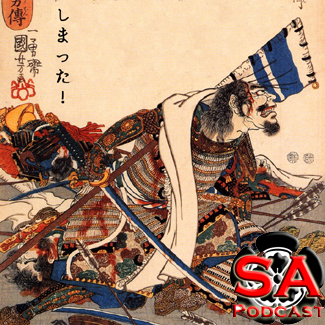
Photo credits: samurai-archives.com
L'addestramento cominciava dai 3 anni, e fino ai 7 consisteva nell’imparare a non temere la morte ed il combattimento, e ad obbedire al proprio signore, controllando la mente ed il corpo. Per temprare il corpo, venivano sottoposti a docce gelate sotto le cascate o nella neve, così che potessero imparare a resistere agli stimoli esterni. Si passava poi all'insegnamento dell'uso dell'arco e della spada contro nemici immaginari.
A 12 anni erano già in grado di uccidere.
Il legame con gli addestratori poteva diventare molto speciale. In epoca feudale le pratiche sessuali tra uomini erano all'ordine del giorno per i guerrieri samurai. Secondo la tradizione dello shudo - da wakashudo (la "Via degli adolescenti") - i giovani trascorrevano diversi anni a contatto con uomini più grandi. Uomini che oltre ad iniziarli alle tecniche di combattimento li introducevano al mondo del sesso. Gli apprendisti samurai ne divenivano allora gli amanti ufficiali, in un rapporto che era riconosciuto ed esigeva, naturalmente, fedeltà assoluta.
I samurai lavoravano per la gloria del daimyō, ma il loro stipendio si limitava a una paga in riso. Per mantenere il proprio status sociale, i samurai che non erano già ricchi di famiglia si arrangiavano come potevano con lavoretti secondari, come la fabbricazione di ombrellini o stuzzicadenti. Li facevano vendere ad altri, però, per non compromettersi troppo. Avevano però anche diversi privilegi: avere un cognome, che la gente comune in Giappone non aveva, e quello del kirisute gomen, ossia l' "autorizzazione a tagliare e abbandonare". Il samurai poteva cioè uccidere chiunque gli avesse mancato di rispetto, se di rango inferiore. L'unico scrupolo era riuscire a dimostrare successivamente, in sede legale, il torto subito.
Per quanto riguarda la vita sentimentale, la moglie dei samurai veniva scelta a tavolino. Essa doveva appartenere a una stirpe guerriera, oppure essere "adottata" da una famiglia di samurai che ne nobilitasse le origini prima del matrimonio. Alle spose dei samurai toccava però un "privilegio" (si fa per dire): col matrimonio guadagnavano il diritto di praticare anch'esse il suicidio rituale, il jigai, con un taglio alla gola.
Nel Giappone medievale si potevano incontrare anche donne samurai addestrate nei valori e nell'arte marziali della casta fin da giovanissima età. I Samurai di questa casta praticavano arti marziali, lo zen, il cha no yu (arte del té) e lo shodō (arte della scrittura). Nell'era Tokugawa persero la loro funziona militare diventando molti di loro semplici rōnin. Alla fine del periodo Edo i samurai erano diventati burocrati al servizio dello shōgun o del daimyō, e la loro spada veniva usata solo per scopi cerimoniali per sottolineare la loro appartenenza alla casta.
Con il rinnovamento Meiji e l’apertura del Giappone al mondo occidentale nel XIX secolo, la classe dei samurai fu abolita poichè ritenuta anacronistica e fuori dal tempo. Al suo posto fu favorito un esercito in stile occidentale. Due leggi, sotto l'Imperatore Meiji (1852-1912), segnarono la fine dei samurai. Una, l'editto Dampatsurei, obbligò i servi guerrieri a rinunciare al codino e a portare i capelli all'occidentale. L'altra, meno di "facciata" e ancora più determinante, fu l'editto Haitorei, che li privò del diritto di portare armi in pubblico. Ai samurai senza katana non rimase che una piccola pensione statale, e il rifugio nel folclore.
Ma il bushidō continua tutt'oggi a sopravvivere nella società Giapponese odierna.
Le Armi
 Photo credits: cdn.history.com
Photo credits: cdn.history.com
I samurai usavano una grande varietà di armi, anzi un'evidente differenza tra la cavalleria europea e i samurai riguarda proprio l'impiego delle armi. I samurai non ritennero mai che esistessero armi disonorevoli, ma solo armi efficienti e inefficienti. L'uso delle armi da fuoco costituì una parziale eccezione, in quanto fu fortemente scoraggiato durante il XVII secolo dagli shogun Tokugawa. Si arrivò a proibirle quasi completamente e ad allontanarle del tutto dalla pratica della maggior parte dei samurai.
Nel periodo Tokugawa si diffuse l'idea che la katana contenesse l'anima del Samurai, e a volte sono stati descritti (erroneamente) come totalmente dipendenti dalla spada per combattere.
Raggiunti i tredici anni, in una cerimonia chiamata genpuku, ai ragazzi della classe militare veniva dato un wakizashi (lo spadino utilizzato anche per suicidarsi) e un nome da adulto. Diventavano così vassalli, cioè samurai a tutti gli effetti. Questo dava loro il diritto di portare una katana, sebbene venisse spesso assicurata e chiusa con dei lacci per evitare sfoderamenti immotivati o accidentali. Insieme, katana e wakizashi, vengono chiamati daishō (letteralmente: "grande e piccolo"). Il loro possesso era la prerogativa del buke, la classe militare al vertice della piramide sociale. Portare le due spade venne vietato nel 1523 dallo shogun ai cittadini comuni che non erano figli di un samurai, per evitare rivolte armate, perché prima della riforma tutti potevano diventare samurai.
Ma oltre alla spada, un’altra importantissima arma dei samurai, era lo shigetou, l'arco asimmetrico giapponese, e ciò non fu modificato per secoli, fino all'introduzione della polvere da sparo e del moschetto nel XVI secolo. Lo shigetou, lungo 2 metri e fatto di legno laminato e laccato,era arma di esclusiva pertinenza dei samurai. Fino alla fine del XIII secolo la via della spada (kendo) fu meno considerata della via dell'arco da molti esperti di bushidō. Un arco giapponese era un'arma molto potente: le sue dimensioni permettevano di lanciare con precisione vari tipi di proiettili (come frecce infuocate o frecce di segnalazione) alla distanza di cento metri. Arrivavano addirittura fino a duecento metri quando non era necessaria la precisione.
Durante l'era di più grande potere dei samurai il termine yumitori (arciere) veniva utilizzato come titolo onorario per un guerriero, anche quando l'arte della spada divenne la più importante. Gli arcieri giapponesi (vedi arte del kyūjutsu) sono ancora fortemente associati con il dio della guerra Hachiman.
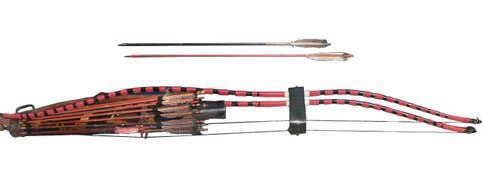
Photo credits: nihonjapangiappone.com
L’arco veniva usato solitamente a piedi, dietro un tedate, un largo scudo di legno, ma poteva essere usato anche a cavallo. La pratica di tirare con l'arco da cavallo divenne una cerimonia shinto detta yabusame. Nelle battaglie contro gli invasori mongoli, questi archi furono l'arma decisiva, contrapposti agli archi più piccoli e alle balestre usate dai cinesi e dai mongoli.
Nel XV secolo anche la lancia (yari) divenne un'arma popolare. Lo yari tese a rimpiazzare la naginata allorquando l'eroismo individuale divenne meno importante sui campi di battaglia e le milizie furono maggiormente organizzate. Nelle mani dei fanti o ashigaru divenne più efficace di una katana, soprattutto nelle grosse cariche campali. Nella battaglia di Shizugatake, in cui Shibata Katsuie fu sconfitto da Toyotomi Hideyoshi, i cosiddetti "sette lancieri di Shizugatake" ebbero un ruolo cruciale nella vittoria.
Completavano il corredo i ventagli da guerra con i bordi affilati come coltelli, ma per diverse epoche della storia giapponese i samurai furono i soli a poter portare armi.
Il Seppuku

Photo credits: focus.it
Seppuku (切腹) è un termine giapponese che indica un rituale per il suicidio in uso tra i samurai. In Occidente viene usata più spesso la parola harakiri (腹切り). A volte in italiano viene erroneamente pronunciato come "karakiri", con pronuncia e scrittura errata dell'ideogramma hara.
Nello specifico seppuku e harakiri presentano alcune differenze, qui di seguito spiegate.
La traduzione letterale del termine seppuku è "taglio dello stomaco", mentre per harakiri è "taglio del ventre" e veniva eseguito secondo un rituale rigidamente codificato. Esso era un modo per espiare una colpa commessa o un mezzo per sfuggire a una morte disonorevole per mano dei nemici. Un elemento fondamentale per la comprensione di questo rituale è il seguente: si riteneva che il ventre fosse la sede dell'anima.Il significato simbolico di questo atto era dunque quello di mostrare agli astanti la propria anima priva di colpe in tutta la sua purezza. Ma anche l'estremo gesto di orgoglio e libertà di un samurai seguiva regole rigidamente codificate. Il sacrificio si doveva consumare davanti a testimoni utilizzando il pugnale (tantō) o la spada corta (wakizashi) ed eseguendo un taglio a "L", che partiva dall'ombelico e si allungava da sinistra a destra, e poi verso l'alto.
I piedi con le punte rivolte verso il basso garantivano che il moribondo seduto sulle ginocchia cadesse in avanti, coprendo lo scempio di sangue e budella. La presenza di testimoni e del kaishakunin, l'assistente incaricato di finire il ferito con un colpo di katana al collo, assicurava che la vittima non soffrisse ulteriormente (e non avesse ripensamenti).
Il kaishakunin era un fidato compagno del samurai che, previa promessa all'amico, lo decapitava appena egli si era inferto la ferita all'addome, per fare in modo che il dolore non gli sfigurasse il volto e preservandone l’onore.
Alcune volte praticato volontariamente per svariati motivi, durante il periodo Edo (1604–1867) divenne una condanna a morte che non comportava disonore. Infatti il condannato, vista la sua posizione nella casta militare, non veniva giustiziato, ma invitato o costretto a togliersi da solo la vita praticandosi con un pugnale una ferita profonda all'addome di una gravità tale da provocarne la morte.
La decapitazione (kaishaku) richiedeva eccezionale abilità e infatti il kaishakunin era l'amico più abile nel maneggio della spada. Un errore derivante da poca abilità o emozione avrebbe infatti causato notevoli ulteriori sofferenze. Proprio l'intervento del kaishakunin e la conseguente decapitazione costituiscono la differenza essenziale tra seppuku e harakiri. Infatti, sebbene le modalità di taglio del ventre siano analoghe, nell'harakiri non è prevista la decapitazione del suicida. Viene pertanto a mancare tutta la relativa parte del rituale, con conseguente minore solennità dell'evento.
Il più noto caso di seppuku collettivo è quello dei "quarantasette rōnin", celebrato nel dramma Chushingura, mentre il più recente è quello dello scrittore Yukio Mishima avvenuto nel 1970. In quest'ultimo caso, il kaishakunin Masakatsu Morita, in preda all'emozione, sbagliò ripetutamente il colpo di grazia, e ciò richiese l’intervento di Hiroyasu Koga, che decapitò lo scrittore.
Una delle descrizioni più accurate di un seppuku è quella contenuta nel libro Tales of Old Japan (1871) di Algernon Bertram Mitford, ripresa in seguito da Inazo Nitobe nel suo libro Bushido, L'anima del Giappone (1899).
Nel 1889, con l’introduzione della costituzione Meiji, venne abolito come forma di punizione ma casi di seppuku si ebbero al termine della seconda guerra mondiale tra gli ufficiali, spesso provenienti dalla casta dei samurai, che non accettarono la resa del Giappone. Un caso celebre fu quello dell'anziano ex daimyō Nogi Maresuke che si suicidò nel 1912 alla notizia della morte dell'imperatore.
Con il nome di jigai, il seppuku era previsto, nella tradizione della casta dei samurai, anche per le donne. In questo caso il taglio non avveniva al ventre bensì alla gola, dopo essersi legate i piedi per non assumere posizioni scomposte durante l'agonia.
L'arma usata poteva essere il tantō (coltello), anche se più spesso, soprattutto sul campo di battaglia, la scelta ricadeva sul wakizashi, detto per questo "guardiano dell'onore".

Photo credits: wikipedia.org
Il Bushidō
Il guerriero giapponese viveva e moriva secondo un rigido codice di comportamento, il bushidō (la via del guerriero), che regolava il rapporto unico e inscindibile tra il samurai e il suo daimyō. Alla base di questo codice c'era la fedeltà assoluta, una rigida definizione di onore e il sacrificio del bene del singolo in favore del benessere comune. È questa l'etica alla base delle azioni anche dei kamikaze giapponesi durante la Seconda Guerra Mondiale e di cui si avvertono strascichi in alcune aziende nipponiche moderne.
Qualora un'offesa o una grave colpa avesse incrinato questo rapporto, c'era sempre una via per salvare l'onore: il seppuku o harakiri, il suicidio rituale.
I precetti dei samurai furono pesantemente influenzati dalle principali correnti spirituali e culturali giapponesi. Verso il 1000 era ancora lo shintoismo la principale fonte di ispirazione per i samurai, corrente che sottolineava la fedeltà all'imperatore, in un'epoca in cui essere samurai voleva dire essere un guerriero abile. Successivamente però concetti taoisti, buddisti e confuciani iniziarono a diffondersi e a sovrapporsi tra lori. In particolare ebbero grande fortuna, dopo il buddismo cinese, il buddismo zen e il buddismo esoterico. Quest'ultimo era praticato soprattutto nelle casate nobili più ricche e potenti, mentre il buddismo zen era praticato anche a livello di piccole scuole e fra i rōnin. In quest'epoca si diffusero molte scuole che associavano ai doveri del samurai l'obbligo di svolgere i propri compiti non solo al massimo delle proprie capacità, ma anche con grazia ed eleganza. Ciò voleva dire dimostrare attraverso il gesto la propria superiorità. Questa pratica che fu molto contestata nel XVI secolo, è rimasta in molte scuole di pensiero samurai.
I guerrieri del 900 erano divenuti, prima del 1300, raffinati poeti, mecenati, pittori, cultori delle arti, collezionisti di porcellane, codificando in molte opere di bushido (fino al Libro dei cinque anelli) una precisa necessità. Un samurai doveva infatti essere esperto in molte arti, non solo in quella della spada. La prima grande codificazione di questa svolta avvenne nello Heike Monogatari, opera letteraria più famosa del periodo Kamakura (1185-1249). Quest’opera attribuiva alla via del guerriero l'obbligo dell'equilibrio tra la forza militare e la potenza culturale. Gli eroi di questa epopea (la storia di una lotta tra due clan, i Taira e i Minamoto) e di altre che si ispirarono a questa negli anni immediatamente successivi, sono gentili, ben vestiti, molto attenti all'igiene, cortesi con il nemico nei momenti di tregua. Ma erano anche abili musicisti, competenti poeti, letterati talvolta particolarmente versati nella calligrafia o nella disposizione dei fiori. E ancora, era appassionati cultori del giardinaggio e spesso interessati alla letteratura cinese.
Inoltre, morendo, spesso mettevano in versi il proprio epitaffio.
Questa visione duplice dei compiti del samurai si affermò grandemente, fino a diventare egemonica. Hojo Nagauji (o Soun), signore di Odawara (1432-1519), uno dei più importanti samurai della sua epoca scrisse nei Ventuno precetti del samurai: "La via del guerriero deve sempre essere sia culturale, sia marziale. Non è necessario ricordare che l'antica legge stabilisce che le arti culturali dovrebbero essere rette con la sinistra e quelle marziali con la destra". In questo egli sottolineava una certa predominanza per le arti marziali, ma da questo insegnamento trassero spunto numerosi samurai che divennero famosi tanto come spadaccini, quanto, e più, come esperti della cerimonia del tè, o come artisti, attori di teatro Nō e poeti. Imagawa Royshun (1325-1420), grande commentatore dell'arte della guerra di Sun Tzu, nelle sue Norme si era spinto oltre, affermando che "Senza conoscere la via della cultura, non ti sarà possibile raggiungere la vittoria in quella marziale". Royshun aveva così creato un nuovo concetto di equilibrio tra cultura e guerra noto come bunbu ryodo ("non abbandonare mai le due vie").
Lo stesso Miyamoto Musashi, uno dei più grandi duellisti del XVII secolo, divenne nella seconda parte della sua vita uno dei più grandi pittori di quel periodo. Concordava con Takeda Shingen (1521-1573), forse il più brillante generale del XVI secolo, che affermava come la grandezza di un uomo dipendeva dalla pratica di numerose vie.
Questo atteggiamento ovviamente provocò tutta una serie di aspre critiche. In particolare si ricorda l'avversione di Kato Kiyomasa (1562-1611) per tutto ciò che non era marziale e la sua opinione, condivisa da molte scuole "estremamente marziali", era che un samurai dedito alla poesia sarebbe divenuto "effeminato", mentre un samurai che avesse praticato il mestiere dell'attore o si fosse interessato al teatro Nō avrebbe dovuto suicidarsi per il disonore che arrecava al suo nome. Correnti di pensiero "estremamente marziali" e di rifiuto degli aspetti culturali della figura del samurai si diffusero notevolmente nei secoli successivi. Questo fatto potrebbe sembrare paradossale per un'epoca di pace (la cosiddetta Pax Tokugawa) durante la quale in piccoli dojo non solo si accettava l'etichetta, ma anzi la si studiava a fond. Al contempo però si intendeva anche ritornare al significato originario dell'essere samurai, il guerriero impavido.
Le differenti fonti di ispirazione culturale a cui erano soggetti i samurai (scintoismo, scintoismo esoterico, taoismo, buddismo cinese, buddismo della terra pura, buddismo zen, buddismo esoterico, confucianesimo ufficiale cinese, confucianesimo dei glossatori giapponesi ed epica classica giapponese) crearono scuole di pensiero e di pratica molto differenti.I principi di vita seguiti erano talvolta contrapposti o, più spesso, semplicemente complementari, anche grazie alla grande attitudine al pragmatismo e al sincretismo della cultura giapponese.

Photo credits: wikipedia.org
Simbolo di tutte le arti marziali. Nell'iconografia classica del guerriero il ciliegio rappresenta insieme la bellezza e la caducità della vita, ed era per questo venerato.I sakura, durante la fioritura, mostrano uno spettacolo incantevole nel quale il samurai vedeva riflessa la grandiosità della propria figura avvolta nell'armatura. Ma è sufficiente un improvviso temporale perché tutti i fiori cadano a terra, proprio come il samurai può cadere per un colpo di spada infertogli dal nemico. Il guerriero, abituato a pensare alla morte in battaglia non come un fatto negativo ma come l'unica maniera onorevole di andarsene, rifletté nel fiore di ciliegio questa filosofia.
Un antico verso ancora oggi ricordato è "tra i fiori il ciliegio, tra gli uomini il guerriero" (花は桜木人は武士 hana wa sakuragi, hito wa bushi), ovvero "come il fiore del ciliegio è il migliore tra i fiori, così il guerriero è il migliore tra gli uomini".
SalvaSalva
Japan History: Minamoto no Yoshitsune
Minamoto no Yoshitsune
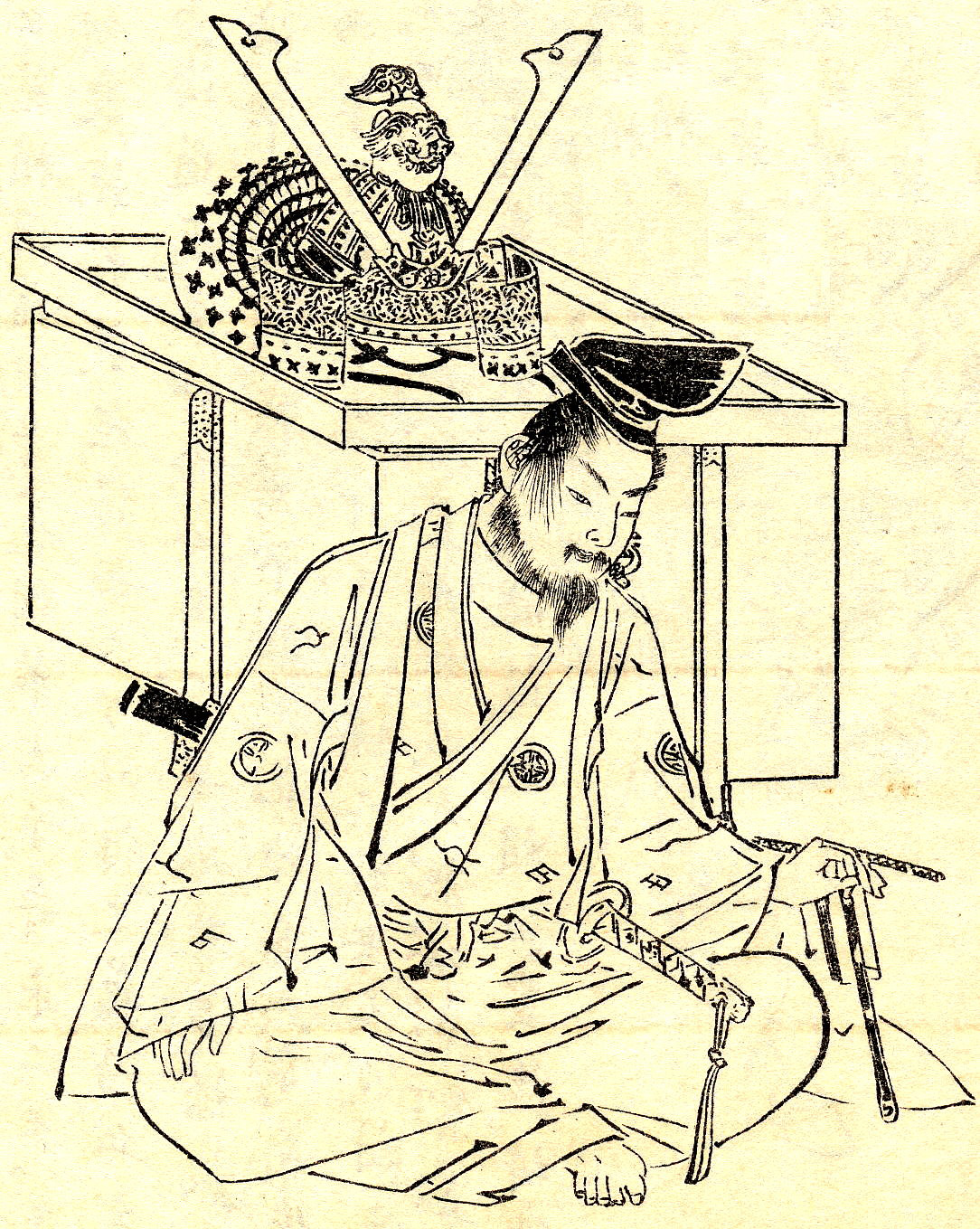 Photo credits: wikipedia.org
Photo credits: wikipedia.org
Minamoto no Yoshitsune (1159-1189) era il nono figlio di Minamoto no Yoshitomo (1123-1160), ed il terzo figlio avuto con Tokiwa Gozen. Nome d'infanzia di Yoshitsune era Ushiwakamaru (牛若丸). Poco dopo la sua nascita, scoppiò la ribellione di Heiji, nella quale suo padre e i suoi due fratelli più grandi persero la vita. Mentre suo fratello maggiore Yoritomo, ormai erede designato del clan, fu esiliato nella provincia di Izu, Yoshitsune fu affidato al tempio di Kurama, sulle montagne di Hiei, vicino Kyoto. Fu infine preso in custodia da Fujiwara no Hidehira (藤原秀衡?), capo del potente ramo settentrionale del clan Fujiwara (Fujiwara del Nord), e portato a Hiraizumi, nella provincia di Mutsu.
 Photo credits: wikimedia.org
Photo credits: wikimedia.org
Nel maggio 1180, il figlio dell'imperatore Go-Shirakawa appoggiato dal clan Minamoto, scrisse una dichiarazione per spingere i Minamoto a sollevarsi contro i Taira. Il contesto è quello della guerra Genpei (1180–1185) che vide contrapposti i clan Taira e Minamoto sulla scelta dell'imperatore da porre sul trono e così assicurarsi il controllo del Paese. La battaglia di Uji fu l'inizio di una guerra che durò 5 anni, e durante la quale Yoshitsune e Yoritomo si riunirono dopo la loro separazione avvenuta nel 1160.
Nel 1184 Yoshitsune andò contro suo cugino Yoshinaka. Quest’ultimo aveva preso il controllo dei Minamoto dopo aver sconfitto i Taira nel Giugno del 1183. A quel punto, Yoritomo mandò contro Yoshinaka suo fratello Yoshitsune che nello stesso anno ottenne la carica di Sô-daisho (generale dell'armata). Le truppe di Yoshinaka furono sconfitte e non appena lo stesso lo venne a sapere, abbandonò Kyoto insieme a Tomoe Gozen, unico esempio di samurai donna. Fu poi messo alle strette a Awazu e costretto a suicidarsi.
Senza più Yoshinaka, Yoritomo ottenne il supporto di Go-Shirakawa per continuare la guerra contro i Taira. Il 13 marzo Yoshitsune si spostò a Settsu, ed il suo primo obiettivo fu una fortificazione dei Taira, Ichi no tani.
Yoshitsune guidò in battaglia 10.000 uomini attaccando da Ovest, mentre 50.000 uomini guidati da Noriyori, fratello di Yoshitomo, attaccavano da est. Il 18 Marzo Yoshitsune arrivò a Mikusayama, attaccando di notte. Secondo lo Heike Monogatari i difensori rimasti vivi scapparono verso la costa rifugiandosi poi nello Shikoku, lasciando 500 morti. Allora Yoshitsune mandò 7000 uomini guidati da Doi Sanehira dal lato ovest verso Ichi no tani, mentre lui stesso ne guidava altri 3000 dalla cima delle scogliere. I Minamoto vinsero sui Taira, e la loro vittoria fece spazio ad un altro assalto a Yashima, il quartier generale dei Taira nello Shikoku. Yoritomo decise per un approccio cauto. I sei mesi successivi furono spesi a consolidare i guadagni già ottenuti e per mettere in ordine le numerose famiglie che avevano finora sostenuto i Minamoto.
Dopo Ichi no tani, Yoshitsune e Noriyori tornarono a Kyoto mostrando per le strade le teste dei Taira. Nell'ottobre successivo Noriyori fu mandato a distruggere i sostenitori dei Taira nel Kyushu e iniziò una lunga e faticosa marcia attraverso le province occidentali. Yoshitsune rimase a Kyoto e agì come il vice di Yoritomo fino ai primi del 1185. Ufficialmente, Yoshitsune era responsabile di emanare decreti che ordinavano la cessazione di qualsiasi violenza all'interno del territorio dei Minamoto. In pratica, le sue direttive riguardavano altri temi, tra cui la proibizione di tasse di guerra senza il consenso espresso della leadership dei Minamoto.
Durante il periodo di Yoshitsune a Kyoto ci furono i primi segni della rottura con Yoritomo. Sembra infatti che quest'ultimo avesse negato a Yoshitsune i titoli imperiali che la corte voleva concedergli, e che si infuriò quando nonostante il suo diniego gli vennero comunque riconosciuti.
Nel Marzo 1185, con Noriyori pronto ad invadere il Kyushu, Yoshitsune fu autorizzato al rientro in guerra. Volendo assaltare Yashima, assemblò una flotta a Watanabe. Durante i preparativi litigò con Kajiwara Kagetoki, uno dei servitori di suo fratello maggiore, riguardo la strategia da adottare, ma nella notte del 22 Marzo Yoshitsune ordinò ai suoi uomini di salpare. Siccome il tempo era brutto, molti uomini rifiutarono di salire sulle navi, ma lo fecero nel momento in cui Yoshitsune minacciò di uccidere chiunque avesse disobbedito ai suoi ordini. Nonostante questo, non tutte le navi lo seguirono.
Yoshitsune arrivò all'alba nello Shukoku, per poi partire per Yashima. La base dei Taira era situata sulla spiaggia e Taira Munemori, accortosi dei fuochi che gli uomini di Yoshitsune avevano acceso nelle vicinanze, ordinò l'immediata evacuazione della fortezza. Lui stesso scappò in nave con Antoku, l’imperatore bambino protetto dai Taira . Nonostante tutto, il clan Taira fu completamente sradicato in quella che viene ricordata come la battaglia di Dan-no-ura, una delle più importanti della storia giapponese.
Dopo la vittoria, nel 1192 a Yoritomo fu dato il il titolo di Shogun. Ma in quell’anno Yoshitsune era ormai già morto perchè Dan-no-ura segnò non solo la consacrazione della sua fama e abilità, ma anche la sua tragica fine.
Da tempo infatti i rapporti con il fratello erano turbolenti. E probabilmente anche la gelosia per l'abilità dimostrata fino ad allora da Yoshitsune ebbe un ruolo nella scelta di Yoritomo di dichiarare il fratello una minaccia per i Minamoto e per l'Impero stesso.

Photo credits: wikimedia.org
Dopo aver tentato di opporsi a Yoritomo, Yoshitsune fu costretto a trovare rifugio a Mutsu, dove si trovava il suo vecchio guardiano Fujiwara Hidehira. Hideara però morì nel Novembre 1187 lasciando come sua ultima volontà una dichiarazione in cui si affermava che Yoshitsune sarebbe dovuto diventare governatore di Mutsu. Un desiderio che il figlio di Hidehira, Yasuhira, ignorò completamente. Scoppiò un inevitabile conflitto con i Fujiwara e le autorità di Kamakura scoprirono dove Yoshitsune si rifugiava.
Benkei, servitore e fedele compagno di Yoshitsune, fece in modo di trattenere i loro assalitori, dandogli così il tempo di uccidere la sua giovane moglie e commettere suicidio. La testa di Yoshitsune fu trasportata a Kamakura, creando una forte emozione in chi la vide.
Venne sepolto nel tempio shintoista di Shirahata Jinja, a Fujisawa, dove la sua salma è tuttora custodita.
Miti e leggende
Nonostante tutto, le notizie riguardanti la morte di Yoshitsune sono sempre state un po' elusive. Secondo l'Ainu historical accounts, non fece seppuku, scappò a Koromogawa, assumendo il nome di Okikurumi/Oinakamui.
A Hokkaido, il tempio di Yoshitsune è eretto in suo onore nella città di Biratori. Alcune teorie lo vedono scappare da Hokkaido e risorgere come Genghis Khan. Ma ovviamente si tratta solo di leggende

Photo credits: samurai-archives.com
Un grande soldato ed una figura classica tragica, Yoshitsune divenne una leggenda ben prima della sua morte. Kujô Kanezane, un supporter di Yoritomo, ha scritto sul suo diario nel 1185,
"Yoshitsune ha lasciato grandi successi; su questo non c'è niente da dire. In coraggio, benevolenza, e giustizia, lascerà una grande eredità ai posteri. In questo può essere solo lodato ed ammirato. L'unica cosa è che ha deciso di andare contro Yoritomo. Questo è un crimine da traditore."
Il modo in cui Yoshitsune morì, gli assicurò un posto d'onore nel futuro, mentre il ricordo di Yoritomo porterà per sempre una macchia nera. Cosa accadde in quell'estate del 1185 sarà sempre un mistero. E’ certo però che i successi di Yoshitsune nella guerra Genpei hanno cambiato il corso della storia giapponese e gli ha assicurato il posto tra i più grandi Samurai.
La vita di Yoshitsune nella letteratura e nell’era moderna
La vita di Yoshitsune, nonostante il suo eccezionale talento militare, finì con una morte cruenta, che attira la compassione di molti. Nella lingua giapponese l'espressione Hougan'biiki (判官贔屓), che vuol dire "compatire o accogliere nelle proprie grazie un debole", contiene il nome postumo di Yoshitsune, Hougan (判官) appunto. Questo nome gli spettava grazie al rango affidatogli dall'imperatore Go Shirakawa, infatti un'altra pronuncia degli ideogrammi di Hougan è Hangan, che significa "magistrato". Inoltre, la vita di Yoshitsune è considerata eroica al punto da essere narrata. Le leggende e i racconti con questo tema si sono moltiplicate col tempo, delineando così una figura di Yoshitsune piuttosto lontana da quella storica. Tra le varie leggende è famosa quella del suo incontro a Oobashi con il fortissimo Musashi. O quella in cui, grazie all'aiuto della figlia dello stregone Kiichi Hogen, riuscì a rubare i due leggendari volumi di tattiche belliche Rikuto e Sanryaku, e a studiarli. O ancora quella dell'improvvisa morte in piedi di Benkei, monaco guerriero, fedelissimo servitore e amico di Yoshitsune, nella battaglia del fiume Koromogawa. Queste leggende sono state rese famose presso un vasto pubblico circa duecento anni dopo la morte di Yoshitsune, all'inizio dell'era Muromachi, grazie alle "Cronache di Yoshitsune". Yoshitsune infatti compare come protagonista nella terza sezione dell'Heike Monotogari, il classico della letteratura giapponese che racconta degli eventi della guerra Genpei e che ispirò molte opere posteriori, soprattutto di teatro Nō e Kabuki. In particolare, si narra che l'aver studiato il "Libro della Tigre", contenuto nel Rikuto, sia stato la causa della sua vittoria a Sunaga, e che da quel momento, esso si sia rivelato indispensabile per le vittorie seguenti. In epoche successive, il nome di Yoshitsune venne utilizzato per consacrare la gloria di una discendenza. Ad esempio, esiste una scuola di arti marziali che avrebbe ereditato delle tecniche da Yoshitsune stesso o da quello che viene ritenuto il suo maestro, Kiichi Hogen.
MOON SAGA e MOON SAGA 2
La figura di Yoshitsune è stata ripresa anche dal cantante e attore giapponese GACKT nelle rappresentazioni teatrali MOON SAGA e MOON SAGA 2. Lui stesso interpreta Yoshitsune descrivendolo come un mononofu, ovvero un essere metà umano metà demone. GACKT, con le sue eccezionali capacità interpretative, è riuscito perfettamente ad interpretare questa dualità, dando vita nella prima parte ad un personaggio ironico, divertente ed anche un po’ impacciato che nella seconda parte diventa demoniaco, spaventoso. Le avventure di Yoshitsune sono, in questo caso, romanzate e rese anche un po' sovrannaturali, ma raccontano comunque la sua storia, perchè Yoshitsune era così. Una dualità, un personaggio pieno di contrasti in cui la benevolenza si alternava con la crudeltà. Yoshitsune perdeva, probabilmente, completamente il controllo quando si sentiva in pericolo e per questo faceva uscire il suo lato "demone".
MOON SAGA 2 è stata anche la prima rappresentazione teatrale al mondo ad usare il projection mapping.

Photo credits: gackt.com

Photo credits: gackt.com
Japan History: Maeda Keiji
Maeda Keiji

Photo credit: wikipedia.org
Maeda Toshimasu, (1543-1612) conosciuto come Maeda Keiji o Keijiro, era un Samurai Giapponese del periodo Sengoku (1467-1568).
Nato a Nagoya, era figlio di Takigawa Kazumasu, adottato poi da Maeda Toshihisa fratello di Maeda Toshiie. Servì sotto Oda Nobunaga assieme a suo zio, e inizialmente doveva essere lui l’erede del clan Maeda. Nobunaga spostò però il diritto di successione da Toshihisa a Toshiie, e Toshimasu perse la sua posizione. A quel punto, cominciarono i dissapori tra lui lo zio Toshiie, si dice infatti che litigassero spesso.
Nel 1581 si fece una reputazione sotto il comando dello zio in un conflitto nella Provincia di Noto. Mentre, durante la Battaglia di Komaki-Nagakute, tre anni dopo, Toshimasu andò a salvare Sassa Narimasa quando fu attaccato al Castello di Suemori.
A Kyoto incontrò Naoe Kanetsugu il karō (samurai e consiglieri di alto livello al servizio dei daimyō) di Uesugi Kagekatsu. I due divennerò molto amici e Toshimasu si unì al clan Uesugi nell’invasione di Aizu. L’invasione ebbe esito negativo, e Keiji guidò la retroguardia durante la ritirata. Nella battaglia riuscì comunque a dare una splendida dimostrazione di forza cavalcando sul suo inseparabile cavallo Matsukaze, ‘vento tra i pini’, mentre brandiva la sua lancia. Grazie a Keiji, le forze di Uesugi furono in grado di ritirarsi intatte, mentre il samurai ritornò alla capitale dedicandosi all’arte e alla letteratura.
Fu successivamente cacciato dalla campagna di Kyushu di Toyotomi Hideyoshi per i suoi modi selvaggi. Quando però Tokugawa Ieyasu sfidò nuovamente gli Uesugi nel 1600, Keiji lottò ancora con loro.
Nella battaglia contro i Mogami la leggenda narra che riuscì a rompere le linee nemiche con solo otto cavalieri, e a distruggere la loro formazione.
Dopo che il clan Uesugi si fu ritirato nel dominio di Yonezawa, Toshimasu rimase con loro.
Secondo la leggenda, alla morte di Keiji il suo cavallo Matsukage, che condivideva con il padrone la stessa personalità indomabile, scappò via per non essere mai più ritrovato. Era un esemplare magnifico che nessuno a parte Keiji era stato in grado di domare, e tanto possente da sopportare il peso del padrone che si diceva fosse imponente.
E’ invece ancora possibile vedere l’armatura di Keiji al Museo Miyasaka.

Photo credit: wikipedia.org
Keiji il Magnifico - Hana no Keiji

Photo credit: vignette3.wikia.nocookie.net
Il personaggio di Keiji Maeda fu così caratteristico e così eccentrico da essere scelto come protagonista di una serie di manga, Keiji il Magnifico (花の慶次 - Hana no Keiji). L’opera è raccontata da Keichiro Ryu e disegnata da Tetsuo Hara, meglio conosciuto come il disegnatore di Ken il guerriero.

Photo credit: Google images
Il manga racconta le avventure del più grande kabukimono mai esistito in Giappone. Il kabukimono è una persona eccentrica che ama distinguersi dagli altri nel modo di comportarsi e nell'aspetto, col fine ultimo di imporre la propria volontà sugli altri.
Keiji è figlio di Takigawa Masuuji e di una delle sue concubine. All'epoca la famiglia Maeda era in rapporti di vassallaggio con i Takigawa e durante un ricevimento Maeda Toshihisa incontra la ragazza e chiede ai Takigawa il permesso di sposarla. La prima notte di nozze la sposa confessa di essere già incinta del suo precedente signore. Ma invece di ucciderla (consuetudine in un'epoca in cui l'onore e il sangue nobile erano fondamentali) Toshihisa adotta il bambino. Così, alla sua nascita Keiji (il cui nome completo è Keijiro Toshimasu Maeda) diventa ufficialmente figlio di Toshihisa e quindi nipote di Maeda Toshiie, uno dei più ricchi feudatari giapponesi dell'epoca Sengoku. In questo periodo si svolgono grandi battaglie per decidere chi dominerà il Giappone dopo Oda Nobunaga. Keiji, cresciuto sui campi di battaglia e dotato di grande forza, partecipa a molti di questi eventi.

Photo credit: ayakashi-ghost-guild.wikia.com
Il suo è un personaggio dai forti senso dell'onore e personalità, e segue il principio base dell'essere kabukimono fino in fondo. Pertanto, Keiji cerca di imporre sempre la propria volontà, consapevole che ciò significa essere liberi non solo di agire a proprio piacimento, ma anche di essere uccisi "come un cane".
In eterna lotta con lo zio, che più volte cerca di farlo uccidere, Keiji rimane nel clan e quindi sotto l'autorità dello zio stesso solo fino alla morte di Toshihisa. Poi inizierà a comportarsi in modo tale da venir cacciato dal clan. Ciò salverà l'onore del clan stesso, in quanto un samurai che abbandona volontariamente il proprio padrone lo disonora.
I personaggi
Vari personaggi di finzione accompagnano Keiji nei suoi viaggi e avventure.
Nel primo capitolo del manga Keiji incontra e si lega al cavallo "diabolico" Matsukase, (copia di Re Nero, il cavallo di Raoul - Ken il guerriero) . E’ un animale più grande del consueto e pertanto capace di sopportare il peso di Keiji, ma che nessun altro riesce a cavalcare. Da allora i due sono inseparabili.
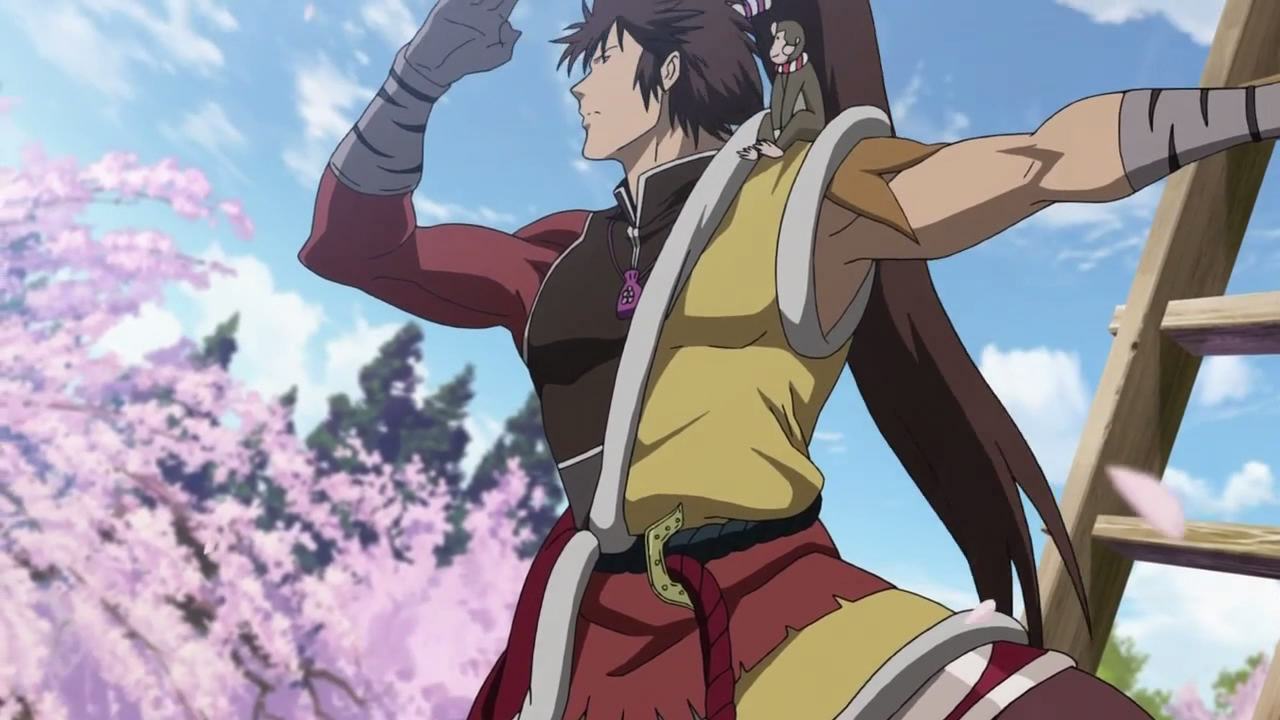
Photo credit: Google Images
Per un certo periodo Keiji è accompagnato dalla piccola Ofu. Incontra la ragazzina quando si trova a confrontarsi con un esperto di arti marziali di nome Gankibo. Ofu lo deve seguire portando sulla testa un secchio in cui raccoglie le orecchie dei nemici morti. Gli spiriti dei caduti la tormentano e quando Keiji sconfigge Gankibo libera Ofu dal suo compito, dando anche pace agli spiriti. Ofu in realtà ha 14 o 15 anni, ma sembra una bambina perché ha deciso di non crescere.
Il piccolo shinobi Sutemaru è il primo vassallo che si mette al servizio di Keiji. All'inizio Sutemaru fa parte della truppa di ninja di Kaga, al servizio di Maeda Toshiie, e vuole uccidere Keiji e Matsukase (il cavallo che ha travolto e ucciso suo fratello). Presto tuttavia Sutemaru decide di abbandonare la truppa dei ninja e di rimanere con Keiji, che serve fedelmente nella speranza, di riuscire a ucciderlo. Sutemaru combatte con armi da taglio, kunai e esplosivi, oltre a fare spesso da esploratore per Keiji. Peculiari del personaggio sono il fatto di canticchiare sempre quando combatte e di non riuscire a mentire perché ogni volta gli occhi gli diventano strabici.
L'ultimo personaggio importante è Lisa, una giovane donna bellissima e dai capelli biondi. Suo padre Yoshiro è figlio di Sen no Rikyu e di una donna occidentale, portata come schiava su una nave pirata europea che si scontrerà con i mercanti di Sakai. Yoshiro conoscerà Keiji e gli mostrerà un ritratto di sua figlia. Il kabukimono si innamorerà perdutamente della ragazza, contesa però anche dal pirata spagnolo Carlos e dal re di Ryukyu (oggi Okinawa, isola principale dell'arcipelago Ryukyu).
Invece tra i personaggi storici incontrati da Keiji vi sono sicuramente suo zio Toshiie Maeda (noto anche come Mataza il lanciere), il kanpaku (reggente dell'Imperatore) Hideyoshi Toyotomi, e Tokugawa Ieyasu suo successore; ma anche Nobunaga Oda, ex padrone di Hideyoshi e Ieyasu, e Hattori Hanzo, capo dei ninja di Iga al servizio di Ieyasu; incontrerà anche il già citato maestro di cerimonie Sen no Rikyu, e il comandante militare della regione Yamashiro (dove si trovava la capitale del tempo, Kyoto) Kanetsugu Naoe; e ancora, il signore di Kanetsugu, Kagekatsu Uesugi, nipote e successore del noto daimyo Uesugi Kenshin; Mitsunari Ishida, favorito di Hideyoshi e cugino di Kanetsugu Naoe, e Date Masamune, daimyo delle terre settentrionali del Paese.
Dopo la battaglia di Sekigahara, nella quale Mitsunari Ishida e Ieyasu Tokugawa si giocano il controllo del paese, Keiji si trova dalla parte perdente. In realtà si è schierato e registrato come vassallo di Kanetsugu Naoe per aiutare il clan Uesugi. Ieyasu aveva provocato gli Uesugi per cercare una guerra al solo scopo di far muovere Mitsunari e farlo scoprire. Keiji decide quindi di incontrare Ieyasu come ambasciatore degli Uesugi. Si rade a zero i lunghi capelli come un bonzo e rinuncia al compenso cui ha diritto come samurai del clan. Fatta la pace, si tiene fuori dalla scena finché Kanetsugu non gli chiede di andare con lui nel suo feudo, proposta che Keiji accetta. La mattina successiva, regala il denaro rimastogli e mette in piedi una festa improvvisata. I balloon ci raccontano che si trasferirà con Lisa presso il clan Naoe e smetterà di essere un kabukimono.
Morirà circa 12 anni dopo, sotto il regno di Tadakatsu Uesugi, erede di Kagekatsu.
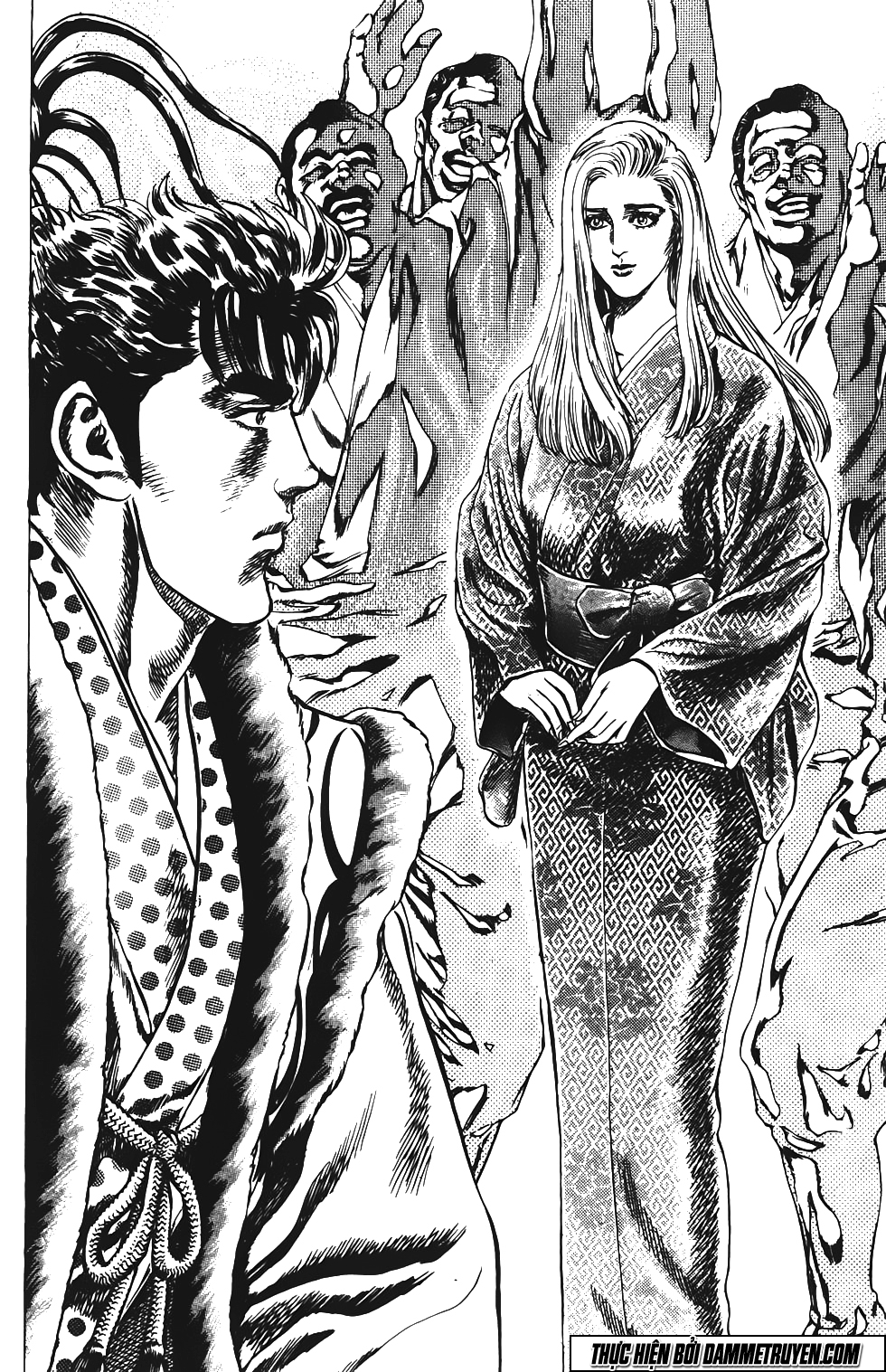
Photo Credit:truyentranhpro.com
Sengoku Basara
Sengoku Basara (戦国BASARA) è un anime diviso in due serie, tratto dal videogioco Devil Kings della Capcom, e composta ciascuna da tredici episodi. Dal videogioco è stato tratto anche un manga diviso in tre volumi denominato Sengoku Basara Ranse Renbu. Creato da Kairi Shimonotsuki e pubblicato dalla casa editrice Udon Entertainment, il manga è pubblicato in Italia dalla J-Pop. Le due stagioni dell'anime sono state invece acquistate da Yamato Video che lo ha annunciato via Facebook, e fa parte del "Secret Project" dell'editore milanese. La serie è in fase di trasmissione sul nuovo canale youtube della Yamato a partire dal 30 ottobre 2013.
Il 4 giugno 2011 in Giappone è uscito il lungometraggio cinematografico intitolato Sengoku Basara: The Last Party.
L’anno successivo è andato invece in onda un adattamento live action dal titolo Sengoku Basara : Moonlight party, trasmesso dal 12 luglio al 20 settembre 2012.
Due anni dopo, nel 2014, è stata poi trasmessa la terza serie televisiva: Sengoku Basara: Judge End, ispirata alle vicende del capitolo Sengoku Basara: Samurai Heroes del videogame.
Personalmente credo che il personaggio di Keiji sia molto interessante e soprattutto che abbia bisogno di essere conosciuto più approfonditamente. Il suo carattere si distingue dagli altri, riesce ad andare contro la serietà che caratterizzava il personaggio del Samurai. Lo sento molto vicino come anima instabile ed eccentrica, sempre alla ricerca di qualcosa che non riesce ad ottenere, ma che probabilmente ha già in mano. Il suo rompere gli schemi, tanto da renderlo in grado di fare scherzi ai suoi parenti, di fregarsene dell’etichetta e del suo essere. Ma anche il suo sentirsi un bambino in un corpo troppo grande, soprattutto per l’epoca, e il suo essere diverso, lo rende una persona da conoscere e da amare.
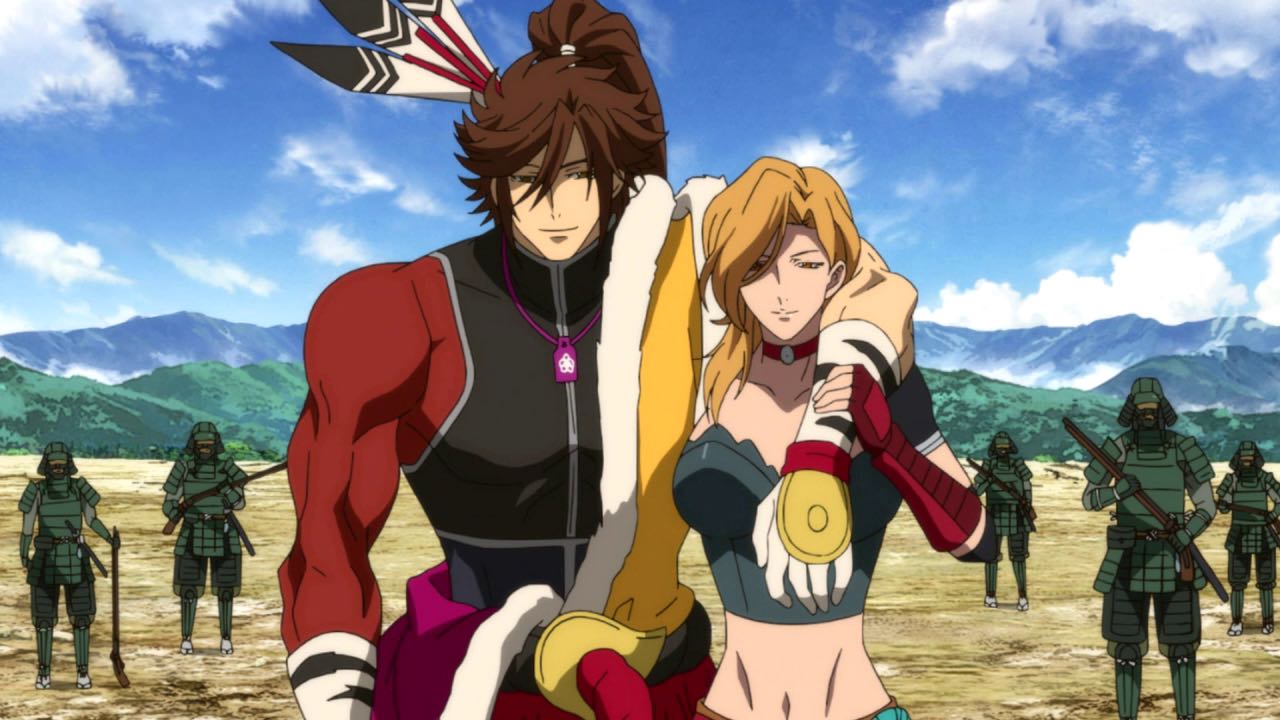
Photo credit: www.Tumbr.com
Il suo amore per Lisa, è poi stata una delle prime volte in cui si è affrontato il rapporto oriente-occidente. Un Samurai che si innamora di un’Europea era all’epoca una sorta di scandalo ed assolutamente qualcosa di inusuale. Bellissima storia tra i due, che continua a far parlare e ad essere fonte di ispirazione per fumetti e videogames.
“Ognuno è debole e fa affidamento sugli altri. Mentre ci tendiamo l’uno verso l’altro, mentre diventiamo amici o combattiamo, il legame che creiamo da forma al nostro futuro. “
Keiji Maeda - Sengoku BASARA

Photo credit: Google Images
Japan History: Uesugi Kenshin
Uesugi Kenshin

Photo credit: wikipedia.org
Uesugi Kenshin( 上杉 謙信), Il drago di Echigo, condottiero e abile stratega, saggio amministratore e uomo d’onore. Sono molti i nomi da lui usati nel corso della sua intensa vita, molte le battaglie e i nemici affrontati. Fra tutti Takeda Shingen e il famoso Oda Nobunaga che si dice esultò alla sua morte, tale era la sua fama e la sua abilità, ed è di lui vogliamo parlarvi.
Uesugi Kenshin nacque come Nagao Kagetora (長尾景虎) il 18 Febbraio 1530 e morì il 19 Aprile 1578. Cambiò il suo nome in Uesugi Masatora ereditando il nome della famiglia Uesugi nel momento in cui diventò Kantō kanrei (vice-shōgun della regione del Kantō). In onore dello shōgum Ashigaka Yoshiteru cambio ancora una volta il suo nome in Uesugi Terutora,per poi arrivare al nome che tutti conosciamo, cambiandolo quindi per l'ultima volta, in Kenshin. Ciò avvenne nel momento in cui diventò un monaco buddhista, fedele a Bishamonten, dio della guerra .
Kenshin era chiamato anche "Il drago di Echigo", perché era incredibilmente abile nelle arti marziali mentre il suo nemico Takeda Shingen era invece chiamato "La tigre di Kai". E infatti nella mitologia cinese il dragone e la tigre sono sempre stati visti come nemici, ma nessuno dei due riusciva mai ad avere la meglio sull'altro.
Primi Anni

Kenshin era il quarto figlio del grande guerriero Nagao Tamekage del clan Nagao. Suo padre era considerato grande signore della guerra grazie ad alcune vittorie contro Uesugi Sadanori e Uesugi Funayoshi. Tamekage entrò però in conflitto con il suo vicino Ikkō-ikki di Hokuriku, perché il potere nella regione aveva iniziato a spostarsi verso Ikkō. La situazione di Echigo peggiorò velocemente fino a quando il padre di Kenshin cominciò a marciare verso ovest nel 1536. Ma giunto in Etchu, le sue truppe furono attaccate da quelle di Enami Kazuyori e Tamekage stesso fu ucciso.
A quel punto, il primogenito di Tamekage, Nagao Harukage, prese il controllo dei Nagao dopo uno scontro con il fratello Kageyasu che, a causa del conflitto, morì. Kagetora (Kenshin) fu trasferito al tempio di Rizen, dove si dedicò allo studio. Fino all'età di 14 anni, quando fu contattato da Usami Sadamitsu e da alcuni conoscenti di suo padre. Volevano farlo tornare ad Echigo per combattere contro il fratello maggiore. Harukage infatti non era stato in grado di controllare le potenti famiglie kokujin e questo aveva provocato l'allontanamento delle province con Echigo.
Nonostante Kagetora non volesse scontrarsi col fratello, alla fine si convinse credendo che fosse una cosa necessarie per Echigo. In uno degli scontri, nel 1547, riuscì infine ad avere il controllo del clan da Harukage. Non si sa a quel punto il fratello maggiore che fine abbia fatto, non si sa se gli fu ordinato il suicidio o meno.
Kenshin a aveva ora il controllo del clan Nagao, ma molti territori erano ancora indipendenti, per questo decise di aumentare il suo potere in tutta la regione. Ogasawara Nagatoki e Murakami Yoshikiyo, due signori di Shinano, chiesero l’intervento di Kenshin contro l'avanzata del potente signore della guerra Takeda Shingen. Kenshin era diventato il nuovo signore di Echigo e Shingen con le sue vittorie nella provincia di Shinano aveva allargato i confini del suo dominio fino al confine con Echigo. A questo punto Kenshin decise di scendere sul campo di battaglia.
Uesugi e Takeda

Photo credit: wikipedia.org
Questo fu l'inizio di un conflitto leggendario, iniziato con piccole lotte, fino ad un un totale di 5 battaglie alla famosa piana di Kawanakajima.
Nel 1561, nella quarta battaglia, la più devastate, Kenshin uso una tattica ingegnosa. Era una tattica speciale in cui chi era in prima linea poteva scambiarsi con le retrovie in momenti di stanchezza per riprendersi. Così facendo nelle prime file potevano esserci sempre e solo soldati riposati e sani. Grazie a questa tattica, Kenshin fu sul punto di vincere più volte e si dice che addirittura cavalco col suo cavallo bianco verso il nemico colpendolo con la spada. Shingen parò il colpo grazie al suo ventaglio da guerra di ferro.
Quindi Kenshin non riuscì a sconfiggere una volta per tutte Shingen che riuscì ad organizzare un contrattacco.
L'esercito di Kenshin si ritirò. Non si sa come sia finita la battaglia, non è chiaro se fu Kenshin o Shingen a vincere. Una cosa è certa, entrambi persero moltissimi soldati. Kenshin perse 3000 Samurai e Shingen 4000, tra cui anche il suo fratello più giovane, Takeda Nobushige.
Sebbene Kenshin e Shingen furono rivali per più di 14 anni si scambiarono molte volte dei doni: il regalo più famoso fu una preziosissima spada donata da Shingen a Kenshin. Shingen morì nel 1573. Si dice che Kenshin pianse per la perdita del suo avversario e fece voto di non attaccare mai più le terre dei Takeda. Le due parti divennero alleate in 3 anni. C’era stato anche un incidente in cui un certo numero di daimyo aveva boicottato gli approvvigionamenti di sale per la provincia di Kai. Kenshin era venuto anche a conoscenza del problema di Shingen con un daimyo del clan Hojo, il quale si era rifiutato di inviargli del riso. Kenshin segretamente inviò del sale ai Takeda e scrisse al suo nemico, Shingen, che secondo lui il daimyo degli Hojo aveva commesso un'azione ostile. Anche se avrebbe potuto tagliarne i rifornimenti e quindi sconfiggere Shingen, Kenshin decise di non farlo perché sarebbe stato un atto disonorevole. A tal proposito, Kenshin dichiarò: "Le guerre sono vinte dalle spade e dalle lance, non dal riso e dal sale". Trattando così il suo rivale, impostò un nobile esempio valido per tutti i tempi. I fautori della pace utilizzano la dichiarazione di Kenshin, riferendosi a tale dichiarazione in questo modo: "La pace si fa con il riso e con il sale, non con le spade e con le lance".
Kenshin e Oda Nobunaga
「四十九年 一睡の夢 一期の栄華 一盃の酒」
« Questi 49 anni della mia vita sono passati come un sogno nella notte. Una esistenza piena di gloria e prosperità non è altro che una singola coppa piena di sake. »
Parte della poesia di morte di Kenshin.
A partire dall'anno 1576, Kenshin cominciò a esaminare la questione di Oda Nobunaga. Egli infatti nel frattempo era cresciuto fino a diventare il signore della guerra più potente del Giappone del momento. Con entrambe le morti di Shingen Takeda e Hōjō Ujiyasu, Kenshin non aveva più ostruita la strada per l'espansione del suo dominio. Quando la morte di un daimyō del clan Hatakeyama della provincia di Noto provocò confusione e conflitto nella zona per la successione, Kenshin colse subito l'opportunità. La conquista delle terre del clan indebolito lo mise in grado di minacciare Nobunaga e suoi alleati. In risposta, Nobunaga mise insieme le proprie forze e quelle dei suoi due migliori generali: Shibata Katsuie e Maeda Toshiie per scontrarsi con Kenshin nella battaglia di Tedorigawa. L'esperto Shibata Katsuie, che aveva servito Nobunaga fin dall'inizio, fu mandato per verificare la famosa reputazione in battaglia di Kenshin. Secondo alcune fonti, Shibata portò 18.000 uomini in battaglia da un lato, seguito da Nobunaga stesso con 20.000 uomini di rinforzi. Se queste informazioni fossero esatte, la battaglia combattuta da questi sarebbe la più grande combattuta nel periodo Sengoku.
Nonostante i numeri travolgenti di Nobunaga, Kenshin riuscì a compiere una solida vittoria sul campo. In un primo momento, Kenshin rifiutò di ingaggiare l'esercito di Nobunaga, fino a quando una pioggia torrenziale neutralizzò le unità di fanteria di Nobunaga stesso. Costretto ad una ritirata precipitosa, Shibata si riunì alla forza principale di Nobunaga.
Successivamente Kenshin riprese una tattica del suo vecchio rivale Takeda Shingen. Finse di mandare avanti una piccola unità per attaccare l'esercito di Nobunaga da dietro, dando al suo nemico una grande occasione per schiacciare la piccola forza rimasta. Nobunaga abboccò all'amo. L'esercito di Nobunaga attaccò di notte aspettandosi un avversario indebolito; invece il grosso dell'esercito di Kenshin era in attesa. Dopo aver perso quasi un quarto della sua forza, Nobunaga si ritirò verso la provincia di Omi. Kenshin si accontentò di costruire una qualche fortezza nella provincia di Kaga prima di ritornare indietro a Echigo. Nell'inverno tra il 1577-1578, Uesugi Kenshin mise in campo un grande esercito per continuare i suoi attacchi in terra di Nobunaga. Tuttavia, è risaputo che la sua salute fosse pessima in questo periodo, e il 9 aprile (secondo il calendario dell’epoca Tenshō ) peggiorò. Morì quattro giorni dopo.
La morte di Uesugi Kenshin
La causa della morte di Kenshin è stato oggetto di interrogativi nel corso degli anni. La teoria accettata dalla maggior parte degli studiosi giapponesi è che una vita da alcolizzato e forse il cancro allo stomaco hanno segnato la fine per il grande signore della guerra.
Altre fonti sostengono che fu assassinato da un ninja, che aveva atteso nella piscina sotto la latrina al campo di Kenshin con una lancia corta. Si noti che le teorie non si escludono a vicenda - l'assassino, se è esistito, potrebbe semplicemente avere ferito a morte un uomo già morente. Si dice che dopo aver sentito della morte di Kenshin, Oda Nobunaga abbia detto: "Ora l'impero è mio."
La morte di Kenshin fu disastroso per il clan. Kenshin non aveva mai avuto figli, ma aveva adottato due ragazzi affinché divenissero suoi eredi. Dopo aver saputo della morte del padre, i due entrarono subito in conflitto per il potere. Lo scontro si concluse con la vittoria di Uesugi Kagekatsu sul fratello Kagetora divenendo così il nuovo capo clan. Tuttavia, il conflitto interno aveva avuto enormi costi sia in materiali che in energie. Oda Nobunaga non ebbe problemi a conquistare velocemente molti dei territori degli Uesugi.
La distruzione del clan non era mai stata così vicina e solo la morte di Nobunaga stesso rimescolo nuovamente gli equilibri di potere in Giappone.
Curiosità

Photo credit: gacktitalia.com
La figura storica di Uesugi Kenshin e la sua fama non sono mai state dimenticate.
Il cantante visual kei GACKT ne ha interpretato il personaggio nella serie televisiva Fuurin Kazan, andata in onda dal 7 Gennaio al 16 Dicembre 2007.
A fine agosto (Il quarto sabato e domenica del mese) si tiene a Jōetsu, nella prefettura di Niigata, un festival in onore del grande guerriero, con la rievocazione della famosa battaglia di Kawanakajima. Nel periodo Sengoku infatti Jōetsu con il suo castello di Kasugayama erano il cuore del clan Uesugi.
E lo stesso GACKT ha più volte ripreso i panni di Uesughi Kenshin durante il festival, riscuotendo un grande successo.
La scrittrice Shino Ayako, che ha scritto il libro intitolato proprio "Kenshin donna" , aveva coltivato dubbi sulla sessualità di Kenshin. Ci sono varie voci ad alimentare la credenza che Uesugi Kenshin fosse una donna.
(1) Nella sua vita, non ha avuto nessuna moglie conosciuta (e neanche concubine) ne ebbe figli naturali. Si dice inoltre che alla compagnia di belle donne preferisse quella maschile. L'omosessualità potrebbe essere una spiegazione plausibile, in quanto all'epoca era una pratica normale nella classe samurai.
(2)Alcuni sostengono che la causa della morte possa essere stata “Omushi”, una malattia documentata come legata alla menopausa.
(3) Si dice che una volta al mese si confinasse nel castello.
(4) In riferimento alla sua armatura, era piccolo di statura alto circa 156 cm.
(5) Preferiva indossare vestiti che avevano colori femminili
Non ci sono prove a sostegno di queste voci, ma di sicuro queste si susseguirono ancora oggi, a testimonianza del fatto che la figura di Uesugi Kenshin ha lasciato un segno indelebile nella storia del Giappone.
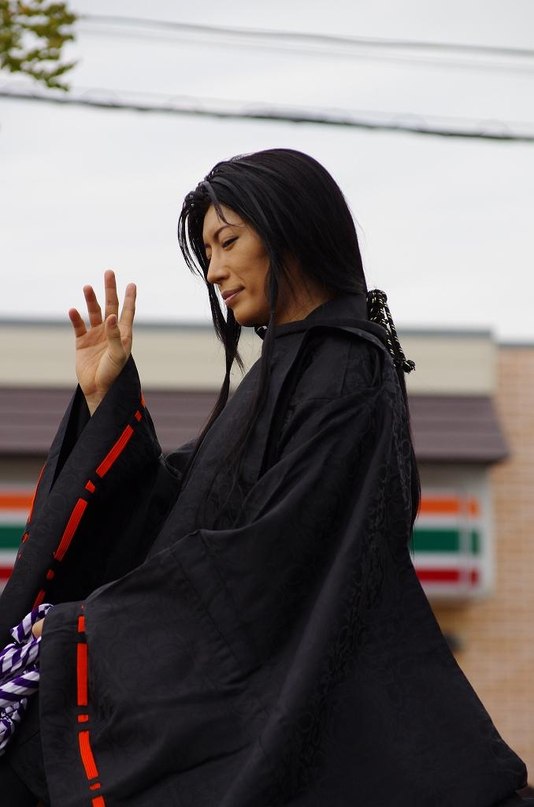
Photo credit: gacktitalia.com
Japan History: Oda Nobunaga
Oda Nobunaga

A copy of Oda Nobunaga portrait from the Italian painter Giovanni Nicolao, commissioned probably by Oda Nobunaga himself.
Oda Nobunaga è figlio di Oda Nobuhide che era un daymio (feudatario) della provincia di Owari. Alla morte di suo padre nel 1551, cominciò ad impazzire totalmente allontanandosi dagli alleati del clan Oda, favorendo il fratello Nobuyuki.
Anche se era l'erede di Nobuhide, non era sicuro che potesse succedergli. Il clan Oda era subordinato al kanrei Shiba Yoshimune, a cui faceva capo lo zio di Nobunaga, Nobutomo. Addirittura Nobutomo fece uccidere Yoshimune nel momento in cui cercò di aiutare Nobunaga. Nonostante ciò, egli riuscì ad ottenere l'aiuto da parte di un altro zio, Nobumitsu fino a conquistare il castello di Kiyosu. Qui Nobutomo fu ucciso e qui Nobunaga abitò per i successivi 10 anni.
Oda Nobunaga inoltre, grazie all'alleanza con il clan Imagawa ed il clan Kira, riuscì a mobilitare le proprie armate nella provincia di Mino (1555). Tutto questo per aiutare Saitō Dōsan, campagna che comunque si rivelò fallimentare perché Dōsan fu sconfitto nel 1556 e Yoshihatsu prese il suo posto.
Qualche mese dopo, Nobuyuki, Shibata Katsuie e Hayashi Hidesada, sfidarono Nobunaga per il controllo del clan Oda, perdendo. Furono comunque perdonati grazie alla madre di Nobunaga che intercedette in loro difesa. Nonostante ciò, Nobunaga continuò ad essere sospettoso nei confronti di Nobuyuki, tanto da fingersi malato per invitarlo al suo castello di Kyiosu ed assassinarlo nel 1557.
Dal 1559
Nel 1559 Nobunaga aveva sconfitto ogni tipo di opposizione interna al clan divenendo signore di Owari.
Per un po' ha continuato a stipulare alleanze con altri damiyō grazie al kanrei Shiba Yoshikane. Tuttavia quando li scoprì essere in trattative con i Kira e gli Imagawa nel tentativo di attaccare il clan Oda, entrò in guerra.
Nel 1560 Nobunaga si trovò ad affrontare il grande esercito di Imagawa Yoshimoto. Questa armata era formata da un numero di uomini che oscillava tra i 20.000 ed i 40.000 uomini. Nonostante lui stesse marciando verso Kyōto, con il suo piccolo esercito di 2000 uomini, giocò d'astuzia. Nella famosa battaglia di Okehazawa, approfittò di un violento ed improvviso temporale per attaccare il campo degli Imagawa ed uccidere Yoshimoto, sconvolgendo tutto il paese per la fulminea vittoria. Da quel momento, il nome di Oda Nobunaga divenne famoso in tutto il Giappone ed il clan Matsudaira firmò con lui un'alleanza.
Saitō Yoshitatsu della provincia di Mino, morì nel 1561 e gli succedette il figlio Tatsuoki. Tuttavia egli era troppo giovane ed inesperto per ottenere la fiducia dei suoi vassalli. Nobunaga ovviamente sfruttò la situazione e si trasferì nel suo castello di Komaki per attaccare Mino. Successivamente convinse i vassalli a lasciare il loro incompetente ed inesperto signore. Nobunaga riuscì nel 1567 ad impadronirsi del castello di Inabayama e ad esiliare Tatsuoki. Nobunaga si trasferì nel suo nuovo castello, rinominandolo Gifu. La parola Gifu proveniva dal monte Gi, dalla quale partì la conquista della Cina da parte della dinastia Zhou e da Tenka Fubu. Con questo si fece anche forgiare un sigillo, che significa "una sola insegna militare sotto il cielo". Tutto ciò era un modo per dire che avrebbe voluto tutto il Giappone sotto una sola spada e ricoprire di gloria militare il Giappone.
Dal 1564
Nel 1564, Nobunaga diede sua sorella Oichi in moglie ad Azai Nagasama, garantendosi il supporto del clan Azai. Nel 1568 Ashikaga Yoshiaki, fratello di Yoshiteru, si recò a Gifu per chiedere l'aiuto militare di Nobunaga per spodestare lo shōgun Yoshihide. Nobunaga accettò per ottenere uno shōgun a legittimare le proprie campagne militari e al contempo avere il controllo della capitale Kyōto. Nobunaga riuscì a conquistare tutti i castelli di Rokkaku. Yoshiaki divenne shōgun e offrì a Nobunaga il posto di kanrei, ma questi rifiutò.
Non appena Yoshiaki si accorse di essere manipolato da Nobunaga, cominciò a tramare contro di lui cercando alleati disposti a combatterlo. Grazie all'alleanza con il clan degli Asakura, Yoshiaki entrò in conflitto con gli Oda e riuscì anche ad affliggere loro gravi perdite. Nella battaglia di Anegawa, Nobunaga sconfisse gli eserciti degli Azai e degli Asakura.
Dal 1571
Nel 1571 attaccò il monastero buddhista della scuola Tendai Enryaku-ji. A questo punto attaccò la fortezza di Nagashima uccidendo migliaia di persone.
Takeda Shingen del clan Takeda, nonostante fosse in buoni rapporto con il clan Oda, aveva aderito all'alleanza contro Nobunaga. Nel 1572 marciò verso la capitale, ma morì nel 1573 prima di raggiungerla così Nobunaga sconfisse Yoshiaki e lo esiliò ponendo fine allo shogunato Ashikaga.
Nello stesso anno i clan Azai e Asakura furono definitivamente sconfitti, e suo cognato Azai Nagamasa, dopo avergli rimandato sua sorella Oichi, compì seppuku. L'erede di Shingen, Takeda Katsuyori, fu sconfitto nel 1575 nella battaglia di Nagashino. Qui la fazione Oda-Tokugawa usò per la prima volta gli archibugi comprati dai portoghesi. L'armata di Takeda fu falciata ancor prima di arrivare allo scontro corpo a corpo.
Il Castello Azuchi
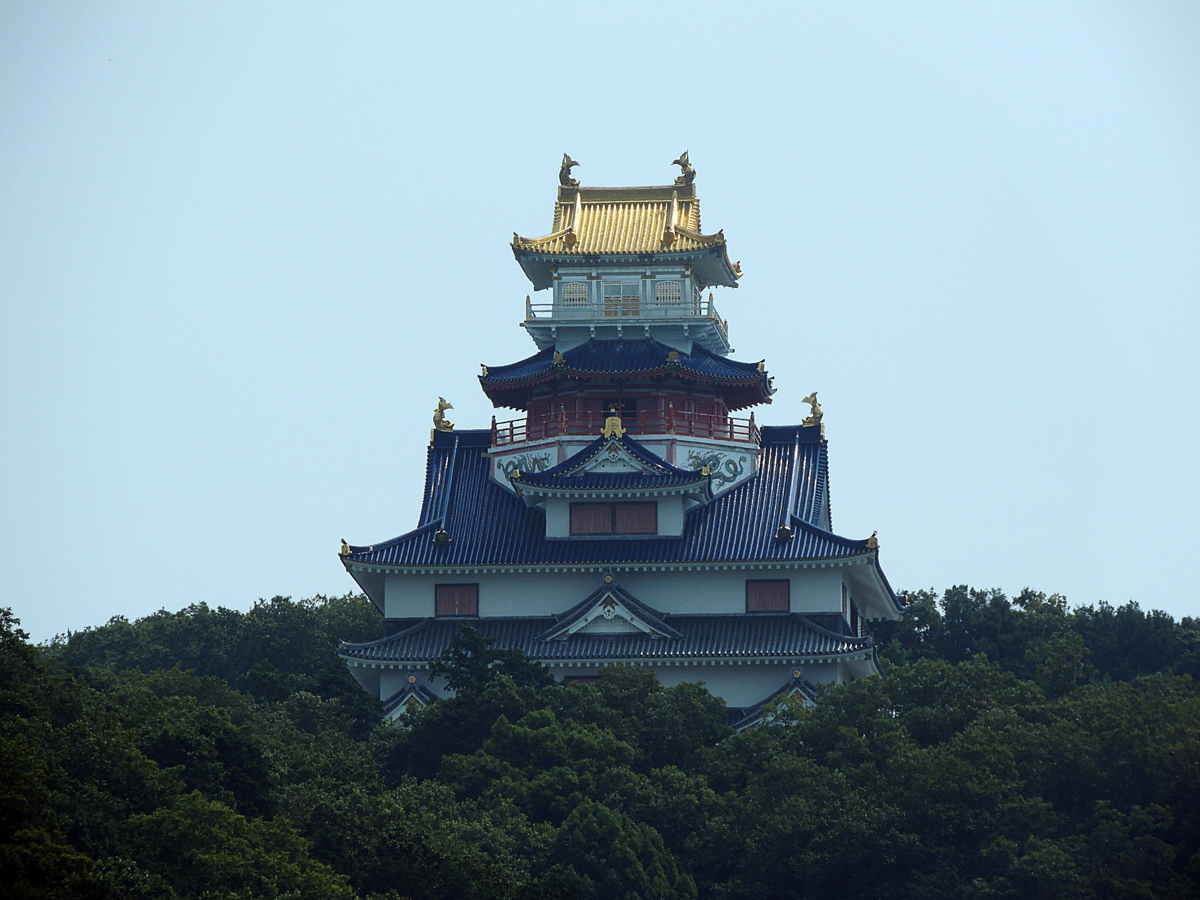
Continuando la sua espansione, Nobunaga cominciò a dislocare i suoi generali a controllo delle singole province. Shibata Katsuie e Maeda Toshiie furono inviati a Nord, e Akechi Mitsuhide nella provincia di Tamba. Hashiba Hideyoshi fu invece mandato a Ovest nel 1577 contro il clan Mori. Quest’ultimo sosteneva con approvvigionamenti via mare la fortezza Ikkō di Ishiyama Hongan-ji. Qui l'esercito di Nobunaga gestiva l'assedio da terra da diverso tempo.
Nel 1578, fu completato il nuovo castello di Nobunaga, noto come castello di Azuchi. Impressionante per le sue decorazioni stravaganti, da questo castello prende nome il periodo compreso tra la caduta dello shogunato Ashikaga e la morte di Nobunaga. Questo è oggi noto come periodo Azuchi.
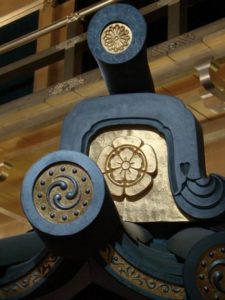
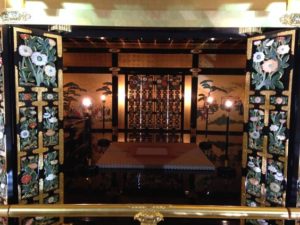
Oda Nobunaga & Uesugi Kenshin
Nel 1577, però, Uesugi Kenshin, il secondo miglior generale del suo tempo dopo Takeda Shingen, aveva deciso di prendere parte ad una seconda alleanza anti-Nobunaga. Il primo scontro avvenne nella battaglia di Tedorigawa, risultando in una decisiva vittoria di Kenshin. Successivamente Uesugi cominciò a preparare la sua marcia su Kyōto. Secondo una tradizione, Nobunaga avrebbe confessato ad un suo ufficiale che se Kenshin fosse arrivato a Kyōto con il suo esercito egli non avrebbe avuto altra scelta che arrendersi e sperare di essere risparmiato. Uesugi Kenshin, però, morì, forse d'infarto, o forse di cancro allo stomaco, mentre si trovava nel suo lavatoio. Secondo fonti dell'epoca la sua salute appariva compromessa già da tempo.
Ormai senza validi rivali, Nobunaga costrinse gli ultimi ribelli Ikkō ad arrendersi nella fortezza di Ishiyama Hongan-ji nel 1580. In questo modo annientò completamente il clan Takeda nel 1582, durante la battaglia di Temmokuzan.
Nobunaga era ormai l'autorità indiscussa nel Paese, e si accingeva a muovere i suoi eserciti contro le province di Echigo e Shikoku.
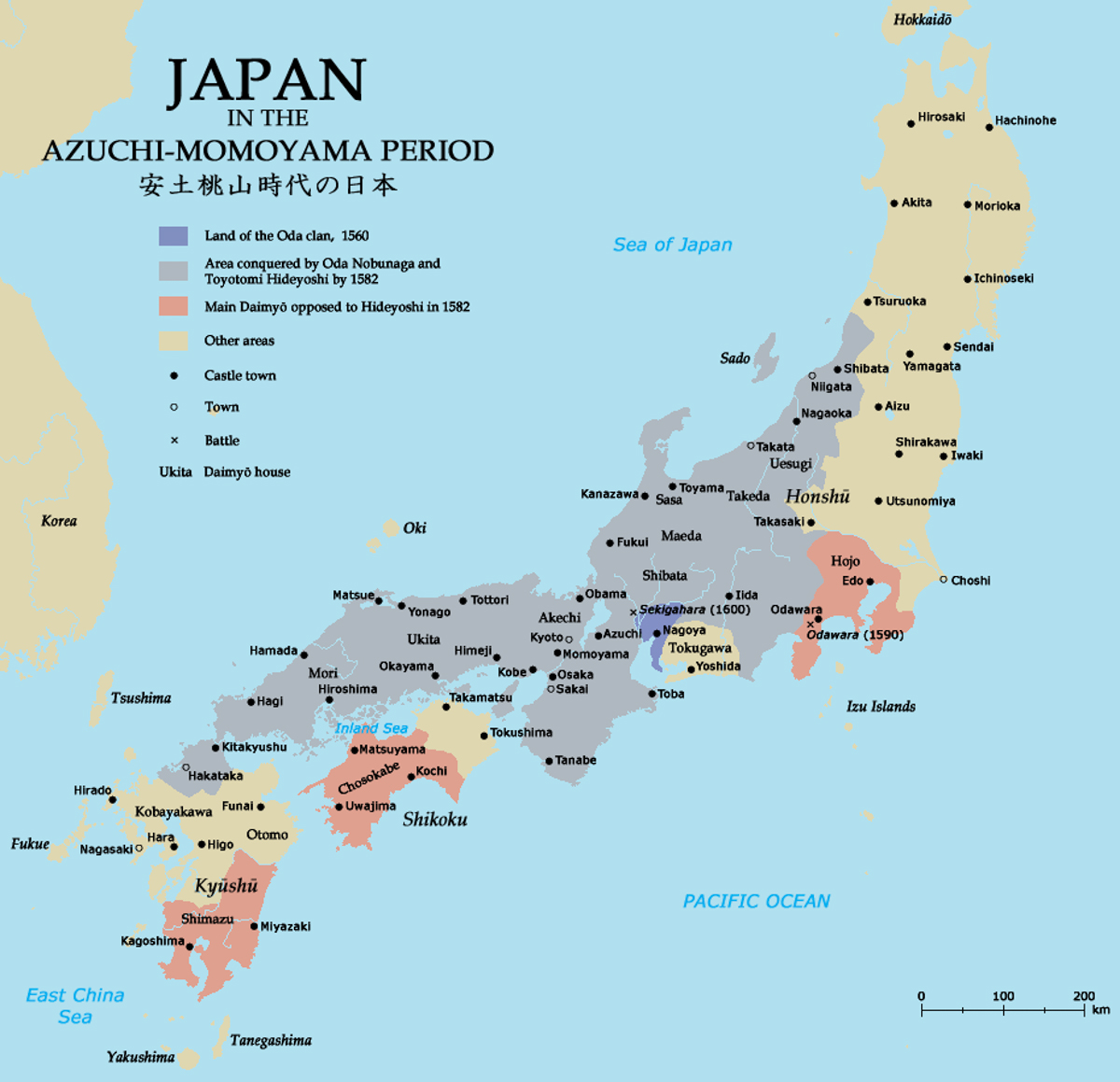
Il Giappone nel 1582. Le aree viola indicano i territori controllati da Oda nel 1560, e le aree grigie indicano i territori controllati da Oda fino alla sua morte, nel 1582.
Dal 1582
Nel 1582, Hashiba Hideyoshi, uno dei generali più vicini a Nobunaga, invase la provincia di Bitchu, assediando il castello di Takamatsu. Quest'ultimo era vitale per il clan Mori, perché occupava una posizione strategica dalla quale era possibile penetrare con facilità nel loro dominio. Mori Terumoto arrivò con il suo esercito a sostegno del castello di Takamatsu. Le due parti si trovarono in uno stallo. A questo punto Hideyoshi chiese rinforzi a Nobunaga.
È stato osservato che Hideyoshi non aveva realmente bisogno di rinforzi. Tuttavia egli chiese comunque l'aiuto del suo signore. Secondo alcuni lo fece per non assumersi direttamente il merito della vittoria, poiché molti generali non vedevano di buon occhio il successo di un generale di umili origini e non appartenente a un clan samurai. Secondo altri Hideyoshi intendeva mettere Nobunaga in una posizione critica in modo da poterne trarre un vantaggio personale.
In ogni caso, Nobunaga lasciò i preparativi per l'invasione di Shikoku a Niwa Nagahide e partì con Akechi Mitsuhide per raggiungere Hideyoshi. Lungo il tragitto, Nobunaga e i suoi uomini sostarono nel tempio Honnō-ji a Kyōto. Qui Nobunaga, essendo al centro del suo dominio e ritenendosi al sicuro, si lasciò scortare solo da pochi servitori e guardie di fiducia. Inaspettatamente, Akechi Mitsuhide dispose i suoi uomini intorno al tempio in un tentativo di colpo di Stato. Nella schermaglia che seguì, Nobunaga perse e si ritirò all'interno del tempio. Mitsuhide, applicando la tecnica che Nobunaga aveva tante volte usato, appiccò fuoco al tempio.
Oda Nobunaga e la leggenda della sua morte
Non si sa cosa accadde a Nobunaga nelle sue ultime ore di vita. Probabilmente lui e il suo attendente Mori Ranmaru compirono seppuku mentre il tempio bruciava. I suoi resti non furono mai ritrovati tra le macerie del tempio, dando adito a una vasta gamma di leggende popolari.
Immediatamente dopo il colpo di Stato, gli uomini di Mitsuhide attaccarono il castello Nijō, dove costrinsero l'erede di Nobunaga, Nobutada, a compiere seppuku a sua volta.
Per undici giorni Mitsuhide incontrò vari esponenti del clan Oda e della corte imperiale per essere nominato successore di Nobunaga invano. Hideyoshi, appena ricevuta la notizia, siglò una tregua con il clan Mori. Successivamente raggiunse e uccise Mitsuhide nella battaglia di Yamazaki dopo soli 11 giorni dalla morte di Nobunaga.
Oda Nobunaga, il capo del clan
Nobunaga non accettò mai nessuno dei titoli che gli furono offerti. Rimase sempre solo il capo del clan Oda e il daimyō di Owari. Ciò nonostante, la sua autorità gli permise di introdurre importanti cambiamenti nel Paese
Una delle novità più importanti del periodo Azuchi-Momoyama fu la razionalizzazione delle famiglie samurai. Nel periodo Muromachi infatti le numerose guerre combattute avevano spinto i clan ad accettare nei loro eserciti chiunque fosse abile nel combattimento. Durante l'epoca Sengoku praticamente ogni giapponese maschio adulto apparteneva ad almeno una organizzazione militare.
Dal 1576 Nobunaga cominciò a confiscare le armi ai contadini nei territori da lui controllati. In questo modo ridusse così il rischio di rivolte e il numero di combattenti da lui non direttamente controllabili. Il suo successore Toyotomi Hideyoshi, nonostante fosse originario da una famiglia di contadini, completò l'opera. Egli distinse per legge la casta samurai. L'accesso a questa casta poteva così avvenire solo per via ereditaria vietando a tutti i non-samurai il porto d'armi. Le famiglie samurai che si erano opposte a Nobunaga prima, e a Hideyoshi e Ieyasu poi, furono dichiarate illegittime. I loro componenti divennero rōnin oppure civili.
Il piano militare di Oda Nobunaga
Sul piano militare, Nobunaga portò il suo esercito al livello tecnologico di quelli europei. Impiegò per primo su larga scala lance, armi da fuoco, navi corazzate, e fortificazioni all'altezza delle guerre di massa del periodo. Alcune fonti, inoltre, gli attribuiscono l'ideazione della formazione a più linee da parte delle truppe dotate di archibugi. In questo modo era capace di garantire un fuoco continuo e quindi un maggiore impatto sul nemico. Tale tattica, utilizzata per la prima volta nel 1575 durante la Battaglia di Nagashino, sarebbe infatti comparsa in Europa solo nel 1590. Nobunaga fece per primo un uso massiccio di armi europee per la sua campagna militare. Lui apportò un cambiamento radicale alle ormai antiquate tattiche belliche impiegate dagli eserciti giapponesi.
Le sue guerre sono però ricordate soprattutto per la loro violenza e per la spietatezza. A questo si unisce la pratica di bruciare vivi i nemici, che Nobunaga usava come monito per i suoi oppositori.
Nobunaga puntò sulla specializzazione e sulla professionalizzazione del suo esercito. Assegnò gli incarichi e le promozioni su base strettamente meritocratica, ignorando quasi completamente le regole di nobiltà e relazioni familiari. L'ascesa di Hideyoshi, che da figlio di contadini riuscì a essere riconosciuto erede di Nobunaga, ne è l'esempio lampante.
Ai daimyō sconfitti espropriò le terre ridistribuite poi tra i propri vassalli non in base alla dimensione, ma alla produzione di riso. Con qualche modifica, il sistema organizzativo di Nobunaga venne esteso a tutto il Paese con l'inizio dello shogunato Tokugawa.
Il piano economico di Oda Nobunaga
Sul piano economico, Oda Nobunaga dimostrò grande competenza, sviluppando i castelli come perno dell'economia locale. In questo modo favorì la migrazione da un'economia agricola a una di tipo manifatturiero. Costruì strade tra i castelli, per agevolare i traffici commerciali e lo spostamento degli eserciti. Uniformò le unità di misura. Potenziò i traffici internazionali, oltre che con Cina e Corea anche con i nanban ("barbari meridionali", termine che copre Filippine, Siam e Indonesia, ma anche l'Europa). Istituì inoltre le rakuichi rakuza, per favorire l'apertura di unioni, associazioni e gilde, proibendo i monopoli che Nobunaga considerava un ostacolo al commercio. Sviluppò anche leggi che prevedevano casi di esenzione fiscale e regolamentò la contrazione di debiti.
Oda Nobunaga e le opere
Grazie alla ricchezza accumulata nel tempo, Oda Nobunaga finanziò varie forme d'arte, e fece costruire meravigliosi giardini e castelli. Il suo castello di Azuchi sulle sponde del lago Biwa è descritto dai contemporanei come uno dei più belli della storia. Coperto d'oro e statue all'esterno e decorato all'interno con paraventi, porte scorrevoli, dipinti sui muri e sui soffitti, soprattutto ad opera di Kanō Eitoku. In questo periodo, il maestro di cerimonie di Nobunaga, Sen no Rikyu codificò le regole del cha no yu, la cerimonia del tè. Nobunaga rese questa cerimonia molto popolare e la usò per discutere di politica e affari. Sotto il suo governo comparvero anche i primi esempi di kabuki, che si sviluppò organicamente nel più pacifico periodo Edo.
Oda Nobunaga e la cultura europea
Nobunaga si dimostrò molto interessato alla cultura europea, tanto che collezionò opere d'arte, armi e armature occidentali. È considerato uno tra i primi giapponesi ad aver indossato abiti europei, Nonostante non fosse religioso sostenne i missionari gesuiti in Giappone come mossa politica contro i monaci buddisti. Sotto il suo governo, il 15 agosto 1576, fu costruita la prima chiesa cristiana in Giappone.
Secondo delle fonti Oda Nobunaga e l'intero clan Oda erano discendenti di entrambi i clan Fujiwara e Taira. La sua discendenza può essere direttamente ricondotta al suo bis-bis-nonno Oda Hisanaga, seguito da Oda Toshisada, Oda Nobusada, Oda Nobuhide, e Nobunaga stesso.
Oda Nobunaga oggi
Nobunaga compare frequentemente nella narrativa e continua a essere descritto in molti anime, manga, videogiochi e film. Generalmente viene descritto come di natura malvagia o anche demoniaca, sebbene alcune opere lo ritraggano in una luce più positiva. Quest'ultimo tipo di opere include il film di Akira Kurosawa Kagemusha - L'ombra del guerriero. Qui il personaggio di Nobunaga è energico, atletico e rispettoso dei suoi nemici. In Goemon viene descritto come un maestro di Ishikawa Goemon. Nobunaga è anche un protagonista del racconto storico Taiko Ki di Eiji Yoshikawa. Qui è un lord fermo ma benevolente. Viene descritto in maniera eroica anche in alcuni videogiochi come Kessen III, Ninja Gaiden 2 e la serie Warriors Orochi. In Hunter × Hunter uno dei membri della Brigata Fantasma è un samurai, che porta il nome di Nobunaga Hazama.
Oda Nobunaga nelle serie TV e videogiochi
In contrasto nella serie di romanzi e anime Yōtōden è descritto letteralmente come un demone e un signore della guerra affamato di conquista. Nel romanzo The Samurai's Tale di Erik Christian Haugaard, è un antagonista "noto per la sua crudeltà spietata". È descritto come malvagio o megalomaniaco in alcune serie manga e anime inclusi Samurai Deeper Kyo e Flame of Recca.
Nobunaga è descritto come malvagio, assetato di sangue, e/o demonico in molti videogiochi come Ninja Master's, Sengoku, Inindo: Way of the Ninja ed Atlantica Online, e nelle serie di videogiochi Onimusha, Samurai Warriors, Sengoku Basara (e il suo adattamento come anime) e in Soulcalibur. Viene anche citato in Detective Conan in un caso di Osaka (episodio 283-285 dell'anime).
Ci sono anche numerosi esempi di sue descrizioni in un contesto più neutrale o storico. Queste si trovano specialmente nei taiga drama (serie storiche romanzate) sulla televisione giapponese. Oda Nobunaga compare anche nella serie manga Tail of the Moon, Kacchu no Senshi Gamu e nel romanzo storico di Tsuji Kunio The Signore: Shogun of the Warring States. Rappresentazioni storiche nei videogiochi (principalmente in giochi strategici occidentali) includono Shogun: Total War, Total War: Shogun 2, Throne of Darkness, "DomiNations", Ninja Commando e la serie Nobunaga's Ambition, così come Civilization V e Age of Empires II: The Conquerors e Sengoku Basara.

Oda Nobunaga è stato tra l’altro interpretato dal cantante attore Giapponese GACKT nel live action Sengoku Basara -Moonlight Party a- tratto dal videogame Sengoku Basara, andato in onda nel 2012.
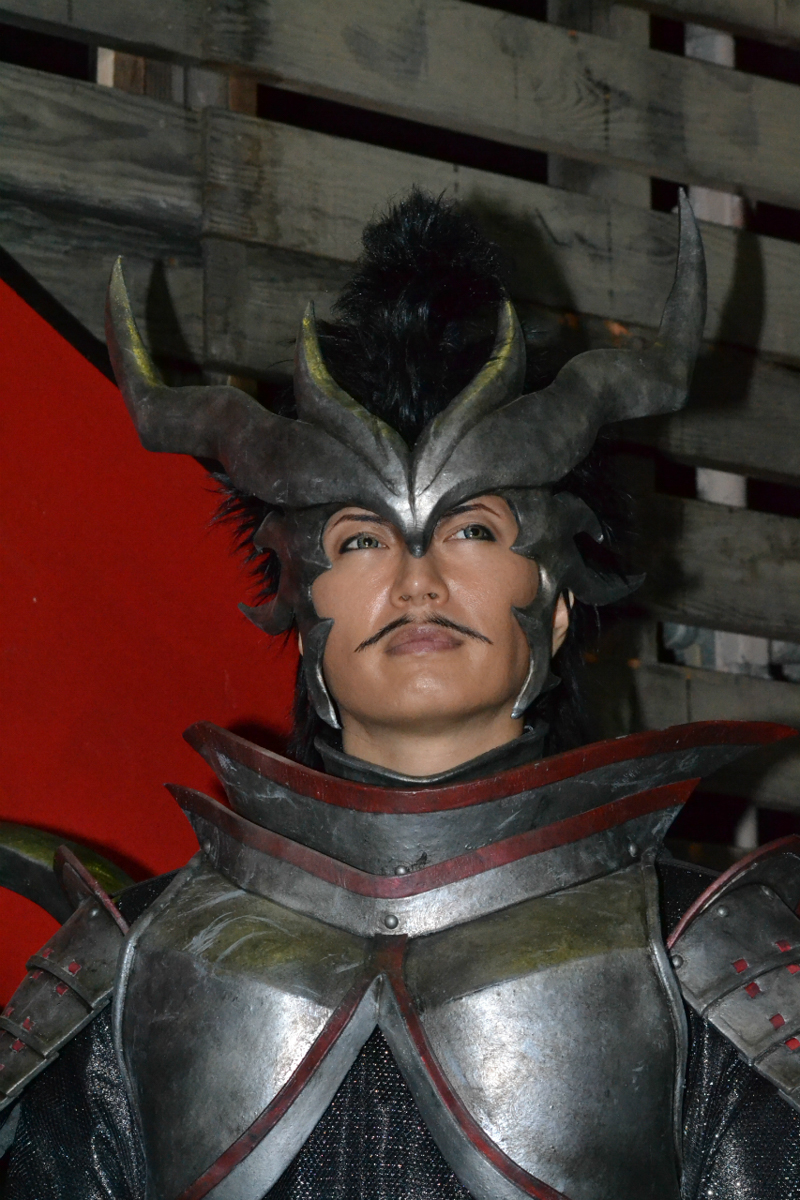
Lo stesso GACKT ha fornito la sigla finale del live action Sengoku Basara -Moonlight Party- con la canzone HAKURO, nel cui video ci sono immagini sue vestito da Oda Nobunaga, ecco una preview del MV:
https://www.youtube.com/watch?v=-HmJ9urodNs
Japan Travel: Asakusa & Sensoji Temple
Asakusa
Asakusa è un quartiere che si trova nella parte nord-est di Tokyo, delimitato dal fiume Sumida. Un luogo interessante soprattutto per la presenza del tempio Sensōji dedicato a Kannon Sama, la Dea Buddista della misericordia. Appena passato il Kaminarimon (la porta del "tuono" con la sua grande lanterna di carta rossa chiamato Chōchin) ci immettiamo nella famosa Nakamise Dori. Questa è una via piena di bancarelle in cui si possono trovare molti oggetti e vestiti tradizionali insieme a giochi per i bambini. Per gli amanti dell'arte culinaria, potete assaggiare prodotti tradizionali come i senbei (crackers di riso in salsa di soia) i fantastici yakisoba (spaghetti di grano saraceno saltati alla piastra) e gli yakitori (spiedini di pollo grigliati).
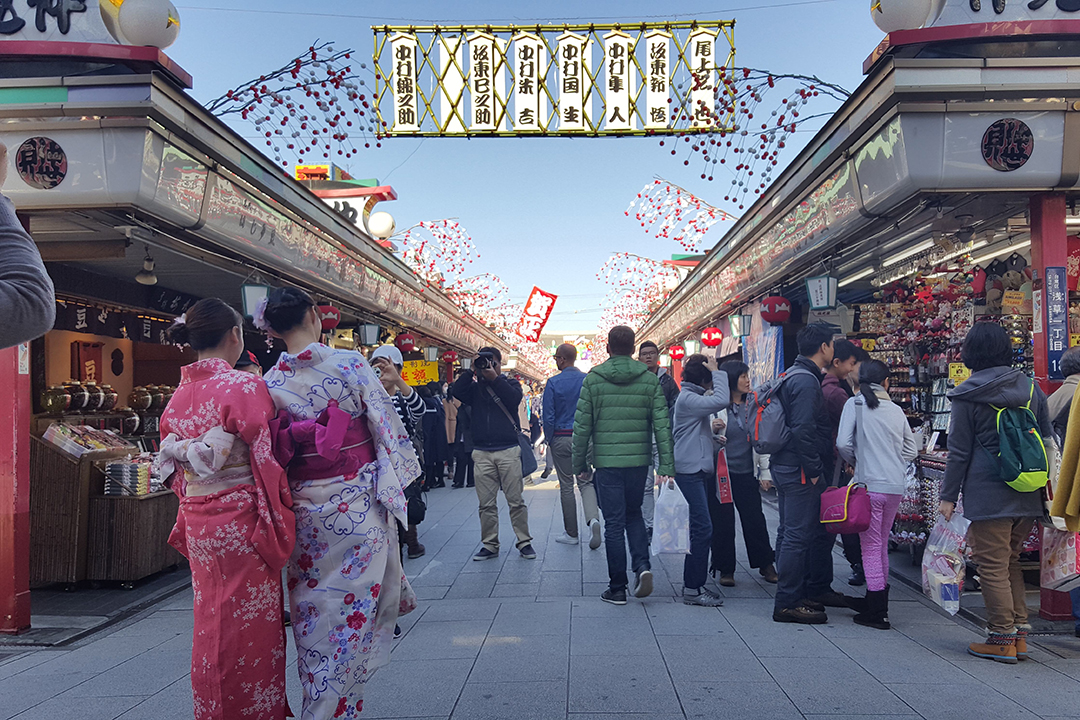
Un po' di tutto insomma, se cercate un posto per ristorarvi, acquistare souvenirs e sentirsi completamente immersi nella tradizione Giapponese, credo che Asakusa faccia al caso vostro. Inoltre l'ambiente è reso ancora più particolare dai portantini, in abiti tradizionali, che trasportano i turisti nei risciò. E' anche un centro molto comodo nel caso cercaste posti divertenti per i bambini. Intorno ad Asakusa potete trovare il più vecchio parco giochi del Giappone, lo Hanayashiki.
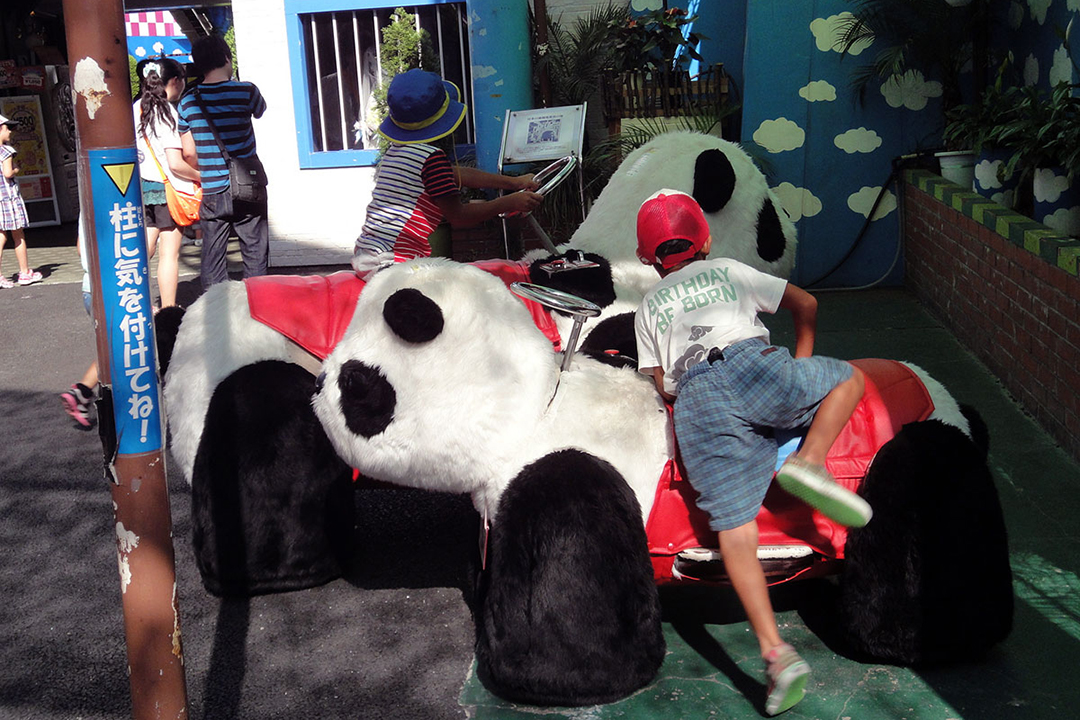
Aperto nel 1853 e è stato successivamente abbandonato totalmente durante la seconda guerra mondiale. Nel 1949, dopo un paio di anni di lavori per la ristrutturazione e per l’adeguamento alle norme di sicurezza, è stato riaperto.
Una cosa carina da vedere è la mascotte del parco, la Panda car con cui i bambini possono divertirsi a guidarla.
Il Tempio Sensō-ji
Il Sensō-ji è un Tempio dedicato al boshisattva Kannon (Avalokitesvara).
La leggenda narra della statua d’oro di Kannon trovata nel fiume Sumida dai due pescatori Hinokuma Hamanari e Hinokuma Takenari nel 628. La statua venne poi conservata dal capo del Villaggio Hajino Nakamoto nella sua casa ad Asakusa. Successivamente questa fu adibita a tempio, così da permettere ai visitatori di venerarla.

Il vero tempio invece fu costruito nel 645 e raso al suolo durante la seconda guerra Mondiale. Essendo stato ricostruito in seguito, è ora simbolo di rinascita dalle ceneri e di pace per tutti i Giapponesi. Inoltre, un albero è cresciuto all’interno del tronco di un precedente albero che fu distrutto dai bombardamenti. Anche questo è un ulteriore simbolo di rinascita.
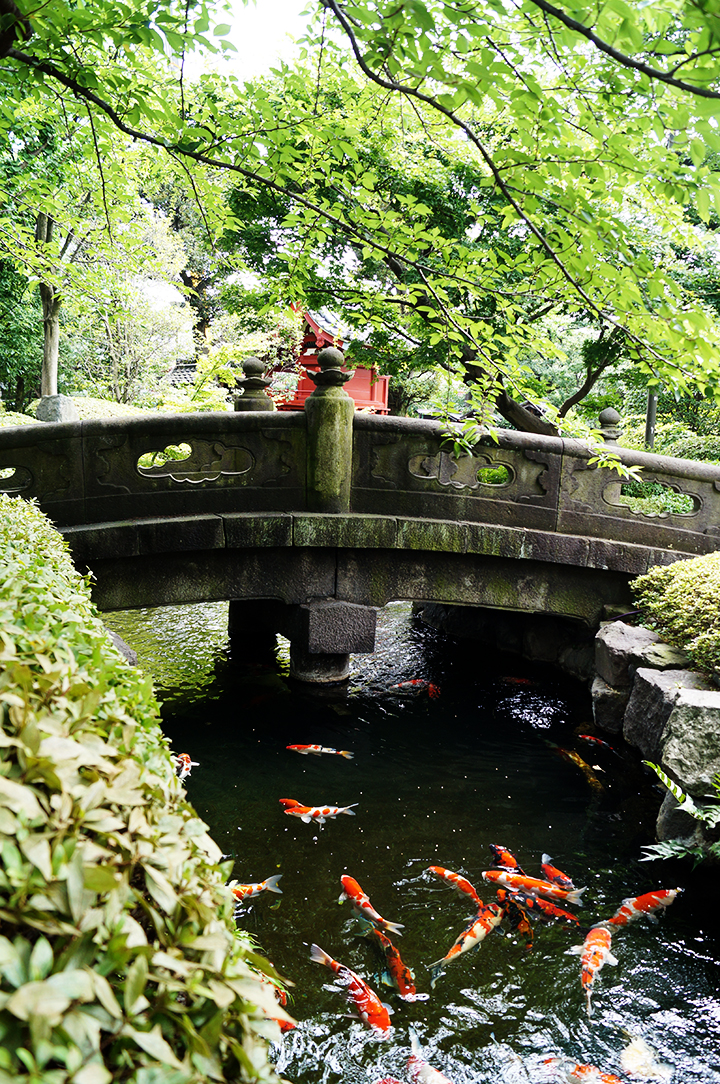
Nel Sensō-ji si svolge il più importante festival Giapponese, il Sanja Matsuri, in primavera. Della durata di 3/4 giorni, il festival attira molte persone tra turisti e gente del posto.
Questo Festival ha subito varie trasformazioni. Originariamente parte come un “funamatsuri”, ovvero una cerimonia che si svolge su una nave. Successivamente, è diventato comune usare i “dashi”, che sono carri da cerimonia. Arriva alla sua forma odierna in cui tre “mikoshi” (altari) vengono portati in processione.
Nel tempio potete trovare dei distributori di omikuji (biglietto contenente una predizione divina), ed anche un giardino in stile tradizionale Giapponese.
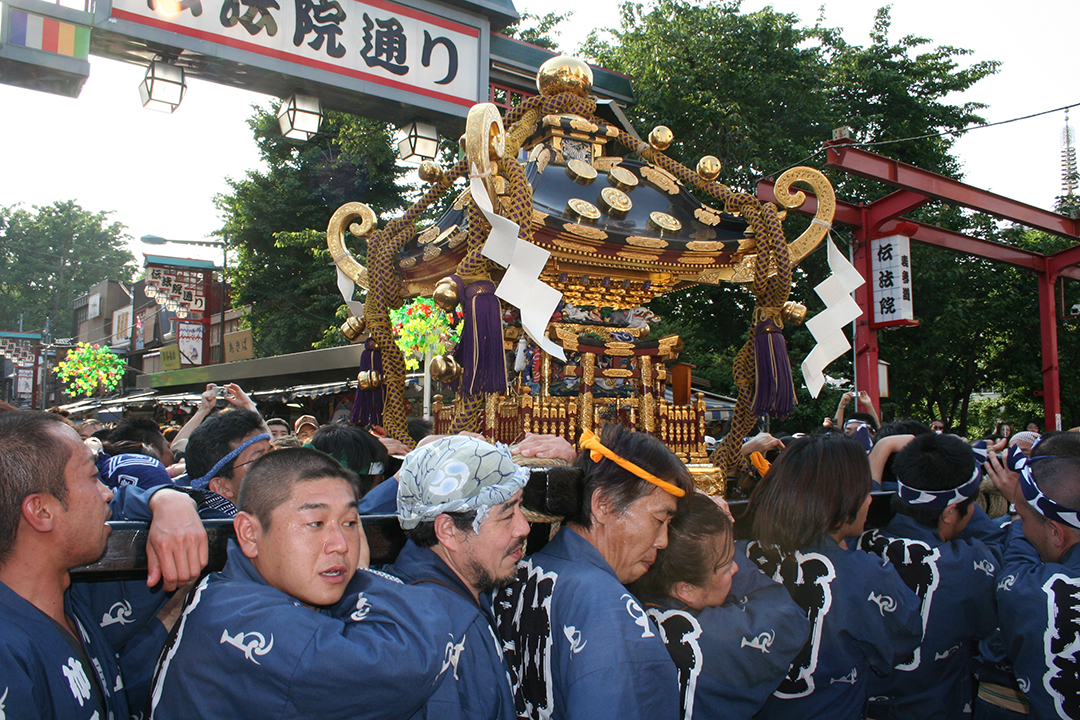
Asakusa in pillole:
Dove: nord-est tokyo
Particolarità: Tempio Sensoji, Kaminarimon, parco giochi Hanayashiki, Nakamise Dori
Cibo: senbei, yakisoba, yakitori e varie specialità della tradizione culinaria Giapponese
Photo Credits: Google Images & Japan Italy Bridge











